
SGA is walking on water after York Guildhall’s resilient design is crowned CIBSE Building Performance Champion
April 2024 JOURNAL
CIBSE BRIDGING THE GAP
www.cibsejournal.com
HYWEL DAVIES ON BUILDING A NEW SAFETY CULTURE MEASURING PEAK ELECTRIC LOADS IN EDUCATION SETTINGS REVISITING RETROFITS FOR THE FUTURE 10 YEARS ON








2 April 2024 www.cibsejournal.com
Editorial
Editor: Alex Smith
Tel: 01223 378034
Email: asmith@cibsejournal.com
Tel: 01223 378048
Technical
editor: Tim Dwyer
Reporter: Molly Tooher-Rudd
Designer: James Baldwin
CIBSE Journal is written and produced by CPL One
Tel: +44 (0)1223 378000. www.cplone.co.uk
1 Cambridge Technopark, Newmarket Road, Cambridge CB5 8PB
Editorial copy deadline: First day of the month preceding the publication month
Advertisement sales
Display and sponsorship Jim Folley jim.folley@redactive.co.uk
Tel: +44 (0) 20 7324 2786
Products & services Daniel Goodwin daniel.goodwin@redactive.co.uk
Tel: +44 (0) 20 7880 6217
Recruitment advertising cibsejournaljobs@redactive.co.uk
Tel: +44 (0) 20 7880 6215
Advertising production Jane Easterman jane.easterman@redactive.co.uk
Tel: +44 (0) 20 7880 6248
The opinions expressed in editorial material do not necessarily represent the views of the Chartered Institution of Building Services Engineers (CIBSE). Unless specifically stated, goods or services mentioned in editorial or advertisements are not formally endorsed by CIBSE, which does not guarantee or endorse or accept any liability for any goods and/or services featured in this publication
We remind all readers that it is their responsibility to verify advertisers’ products claims.
CONTRIBUTORS

Hywel Davies
CIBSE’s former technical director on the key issues that need addressing under new building safety regime

New beginnings

It’s that time of year when construction professionals emerge from their winter hibernation to meet old colleagues and new contacts at the construction industry’s spring conferences.
Futurebuild was back at ExCeL London, with a particular focus on heat networks and domestic decarbonisation. On the third day, CIBSE’s new research manager, Zoe De Grussa, introduced a session on overheating in the built environment, which featured insights into the work being done on the next update of CIBSE’s weather files and TM59: Design methodology for the assessment of overheating risk in homes
With rising global temperatures, it’s not surprising that future weather files, modelled on Met Office climate data predictions, are expected to show higher overheating risks and have more frequent and intense weather events. Susie Diamond trailed changes to the TM59 modelling tool, which could allow for higher bedroom temperatures and ceiling fans, to compensate for rising temperatures.
One of the best attended events last month was Hywel Davies’ CIBSE retirement do, at St Andrew Undershaft Church in the City of London, Hywel’s regular place of worship for 20 years. The large number in attendance was evidence of the high regard in which Hywel is held in the industry and of the many committees and working groups to which he has contributed during his 40-year career (page 18).
Some of his contributions to the wider industry came about after CIBSE supported Hywel to join the Building Regulations Advisory Committee. He took up his role the month before the Grenfell Tower fire and was subsequently asked to chair the working group that reviewed the use and structure of Approved Documents, which fed into Dame Judith Hackitt’s Independent Review of Building Regulations and Fire Safety. Two years later, CIBSE was asked by Sir Patrick Vallance, chief scientific adviser to the government, to produce ventilation guidance during Covid and, last year, Hywel sat on the working group that produced the guidance on damp and mould, created after the death of two-year-old Awaab Ishak from exposure to mould.
Our cover star this month is York Guildhall, named CIBSE Building Performance Champion earlier this year. Consultant SGA managed to incorporate a river source heat pump into the retrofit, despite the age of the buildings (page 20). Contrast that with 10 groundbreaking retrofits from a decade ago that have been reassessed in a major new study (page 26). Research has found that the energy efficient measures have stood the test of time, but only one home had a heat pump fitted 10 years ago, showing just how quickly pioneering technologies enter the mainstream.
■ ALEX SMITH, EDITOR asmith@cibsejournal.com
Sanjay Modasia
The benefits of joining the Society of Public Health Engineers’ Plumbing Centre of Excellence for young engineers

Anastasia Mylona
Communicating the benefits of naturebased solutions to the public and policy-makers

Tim Dwyer
This month’s CPD looks at the foundations for successful fitting of heat pumps in nondomestic buildings
www.cibsejournal.com April 2024 3
EDITORIAL















Book Today tamlite.co.uk Circular Economy | Optics | SLL Lighting Handbook Emergency Lighting | Lighting for Wellbeing | Dark Skies Elevate Your Expertise with Tamlite’s CPD modules. FREE

26 Revisiting retrofits 10 years on
CIBSE and Studio PDP have investigated how 10 housing projects are performing a decade after they were retrofitted ■ Technical
16 Green gains
How building professionals can embrace nature-based solutions for greener cities, by Anastasia Mylona
49 Q&A: Nurturing talent
Sanjay Modasia on SoPHE’s Plumbing Centre of Excellence, which looks to advance young people’s careers in plumbing and heating
17 Preparing for the worst
CIBSE’s overheating session at Futurebuild revealed the danger of a warming climate for care homes and London flats. Alex Smith heard what is being done to mitigate the risks
18 Making the world a
As he retires from CIBSE after 25 years, Hywel Davies speaks to Alex Smith about building safety reforms and his plans for the future
20 Taking the waters
SGA Consulting was crowned CIBSE Building Performance Champion for its York Guildhall retrofit. Andy Pearson looks at the design
Heating, water heaters and data centres
30 Essential lessons from electric schools
Many all-electric schools are designed for peak loads that will never be met.
Cundall’s Peter Hazzard has been analysing the data
35 Secondary thoughts
CIBSE responds to a recent government consultation on the upcoming heat network zoning regulations
39 Decarbonising with data
Two studies have looked at the impact of AI on improving the function of data centres. Molly TooherRudd highlights the potential for optimisation and maintenance
SUBSCRIPTION ENQUIRIES
If you are not a CIBSE member but would like to receive CIBSE Journal, subscribe now! Costs are £80 (UK) and £100 (international). For subscription enquiries, and any change of address information, please contact Nicola Hurley at nhurley@cibse.org or telephone +44 (0)208 772 3697. Individual copies are also available at a cost of £7 per copy, plus postage.
CIBSE Journal, ISSN 1759-846X (USPS 4070) is published monthly by CPL One, 1 Cambridge Technopark, Newmarket Road, Cambridge CB5 8PB, UK.
Subscription records are maintained at CIBSE, 222 Balham High Road, London, SW12 9BS, UK. ISSN 1759-846X (print) ISSN 2756-1895 (online)


18 CONTENTS www.cibsejournal.com April 2024 5 JOURNAL CIBSE www.cibsejournal.com The official magazine of the Chartered Institution of Building Services Engineers SOCIAL MEDIA @CIBSEJournal CIBSE LinkedIn CIBSE Journal newsletter www.cibse.org ABC audited circulation: 18,724 January to December 2021 Printed by: Warners Midlands PLC CREDITS Cover iStock.com / Mediterranean P07 iStock.com / Simonbradfield P09 iStock.com / AquaArts studio P10 iStock.com / LukaTDB P12 iStock.com / 3yephotography P29 iStock.com / Welcomia
35 iStock.com / Maksim Safaniuk
39 iStock.com / Gorodenkoff
50 iStock.com / Intpro FOR CIBSE
P
P
P
Balham High
London
Journal production manager: Nicola Hurley Tel: +44 (0)208 772 3697, nhurley@cibse.org CIBSE, 222
Road,
SW12 9BS Tel: +44 (0)208 675 5211 ©CIBSE Services Ltd. ISSN 1759-846X
■ News 6 News 12 CIBSE news ■ Voices
■ Features
safer place
■ CPD 41 Foundations for successful heat pump installations in nondomestic buildings ■ Classified 46 Products ■ Events & Training 50 Looking ahead
High Court overturns Gove’s M&S decision
The High Court has overturned Michael Gove’s decision to refuse controversial plans by Marks & Spencer’s to redevelop its flagship store at 458 Oxford Street, in London’s West End.
The Secretary of State for Levelling Up over-rode his planning inspector’s recommendation to approve the retailer’s application to replace its existing art deco store with a taller, 10-storey retail and office block.
In his decision, issued last year, Gove said he was not convinced that M&S and its architects had thoroughly explored the alternatives to demolition of the existing building. He refused permission partly on the grounds that the scheme would not encourage the reuse of existing resources, including conversion of buildings.
However, Mrs Justice Lieven ruled in a High Court judgment on 1 March that Gove’s decision was ‘thoroughly confused’ and he had made an ‘obvious error’ by relying on London Plan policies, which relate to operational, rather than embodied, emissions.
National Grid reveals £58bn plan to boost power
Infrastructure will allow offshore wind output to increase to 30GW by 2030
National Grid has announced a new north-south transmission ‘spine’ to link Scottish wind farms with the main centres of power demand in the south of England, as part of a £58bn investment plan to turbocharge the electricity network.
The Beyond 2030 document, published on 19 March, outlines how the Grid’s Electricity System Operator (ESO) proposes to accommodate the government’s target to boost offshore wind output to 30GW by 2030.
The ESO’s plan facilitates the connection of an additional 21GW of offshore wind, due to be delivered as a result of the Crown Estate’s ScotWind seabed leasing round.
An update to the ESO’s 2022 Holistic Network Design document, Beyond 2030 envisages more than three times as much undersea cabling being laid than with new
onshore routes, directly linking electricity being produced offshore. This includes multiple offshore ‘bootstrap’ lines running along the east coast, the longest of which would link a windfarm off the coast of north Scotland with Kent.
In addition, the grid between northeast Scotland and northwest England would have to be reinforced to provide north-south transfer of power, which could form a new ‘arterial’ transmission route. The plan includes the first transmission line linking north and south Wales.
The publication identifies regions of strategic importance, where large-scale demand users –such as hydrogen electrolysers or data centres –could be located as an alternative to building additional network infrastructure.
The ESO estimates that the UK will need 20-25GW of energy storage capacity by 2035 to decarbonise the Grid. Only around 4GW was operational at the end of 2023.






EXTENSIVE PRODUCT RANGE AND BESPOKE SOLUTIONS COMPREHENSIVE
since 1919, our extensive portfolio of general and public health valves, pipe fittings and commissioning valves for constant and variable flow ensure you don’t have to look anywhere else. Even if you need a bespoke solution come to us. Find out more at Cranefs.com/solutions 21400_CRANE_FS_COMPREHENSIVE_AD_133X186.indd 1 14/02/2022 13:32 6 April 2024 www.cibsejournal.com
Trusted
NEWS
BY ROYAL APPOINTMENT
Vacancies for senior operations engineers to work in Buckingham Palace and Windsor Castle have been advertised by the Royal Household on the CIBSE Journal jobs site. The advertisement says the ‘size, complexity and heritage’ of the ‘world-famous’ royal residences present ‘truly fascinating and often unique challenges’. Key responsibilities in both roles, which are being offered with annual salaries of £60,000 to £70,000, include managing the palace’s operations engineering team. Apply at jobs.cibsejournal.com

Watered down standards will impact councils’ net zero plans
Joint letter says local authorities must be able to set energy-based targets
A bid by ministers to crack down on local authorities seeking to set energy efficiency standards for buildings that go beyond national regulations has been branded ‘unnecessarily draconian’.
Councils, eco-developers and built environment professionals have signed a joint letter to Secretary of State Michael Gove, expressing concern about a written ministerial statement (WMS) issued by junior levelling up minister Baroness Penn on 13 December.
The WMS states that planning policies proposing local energy efficiency standards for buildings that go beyond ‘current or planned’ Building Regulations, should be rejected at public examination if they do not have a ‘well-reasoned and robustly costed’ rationale that ensures development remains viable.
However, the Town and Country Planning Association has said in a letter that the approach is ‘unnecessarily draconian’. It warns that the WMS will have a ‘severe impact’ on the ‘many’ local authorities that have invested ‘significant sums’ to develop much more effective energy performance standards in local policy.
This ‘innovative work’ is ‘threatened’ by the government’s decision to restrict the ability of local authorities to set energy performance standards other than through the ‘limited approach’ of a target emission rate (TER), measured through the Standard Assessment Procedure.
The TER measures regulated energy use (heating, hot water, ventilation, cooling, lighting, and auxiliary uses), but not unregulated energy use (plug loads and appliances). The energy use intensity unit, which is the basis of the upcoming Net Zero Carbon Buildings Standard, includes unregulated and regulated loads.
Energy-based metrics have already been adopted in local plans of local authorities, including Cornwall, Bath and North East Somerset, and Central Lincolnshire.
The signatories urge Gove to make it clear that local planning authorities can adopt standards in local plans that use ‘absolute’ energy metrics as long as such policy is ‘robustly evidenced and viable’.
They also say government must not prescribe approaches that undermine their own carbonreduction targets and prevent innovation in policy and technology that the nation urgently needs to tackle the climate crisis.
IN BRIEF
Redfern appointed CIBSE Technology Committee chair
Rob Redfern, onsite renewable energy manager at Tesco, is taking over as chair of CIBSE’s Technology Committee. He has previously served on CIBSE’s East Midlands committee and National Council when working as a consulting engineer. Redfern takes over from Katie ClemenceJackson, whom CIBSE said had made ‘outstanding contributions’ in the role. Commenting on his new role, Redfern said: ‘The committee has a great opportunity to be at the forefront of how our industry reacts to climateadaption needs, aligned with the advancements in technology, which I am very excited about.”
HDR makes four senior appointments
HDR has four new faces in its UK and EMEA team. Nick Lintott, who joins as business development director, has a 27-year track record in commercial real estate with high-profile clients and projects, including the London Stock Exchange and Landsec.
Meanwhile, Erkan Soyda has been appointed as a new associate director of vertical transportation, Nick Armitage joins as associate director, business development support, and Ruairí Dempsey – who is chair of the British Council for Offices Northern Ireland Regional Group – joins as MEP director.
Anti-slavery charity supports 5-a-side cup
This year’s Construction Cup 5-a-side football tournament is being supported by anti-slavery charity Unseen.
The tournament takes place on 23 May at Selhurst Park, the home of Crystal Palace.
Unseen will be running a short CPD before the tournament on identifying signs of slavery and eradicating it from the supply chain. Dave Grant, managing director of Scitech, the cup organiser, said: ‘Our engagement with the Construction Cup ’24 has inspired us to bolster the anti-slavery sections within our supply chain prequalification and monitoring arrangements. This isn’t merely about compliance; it’s about taking a stand and ensuring our practices reflect our ethos.’
NEWS | DIGEST
www.cibsejournal.com April 2024 7
UK Budget falls short on home energy efficiency
The Budget on 6 March has been widely criticised as a ‘missed opportunity’ to improve the energy efficiency of the UK’s housing stock.
In what could be the last such tax and spending announcement this parliament, Chancellor of the Exchequer Jeremy Hunt’s Budget contained no new measures to boost energy efficiency or home heating decarbonisation.
Brian Berry, chief executive of the Federation of Master Builders, said the lack of new measures to help homeowners improve energy efficiency was ‘disappointing’.
Juliet Phillips, programme lead on the energy transition at the E3G thinktank, said: ‘Upgrading our cold and leaky housing stock is central to addressing fuel poverty, lowering energy bills, and reducing the UK’s dependency on volatile international gas markets.’
However, she said the Budget had resulted in ‘no action to lower heat pump running costs or create incentives for landlords to upgrade homes in the private rented sector – where one in four households lives in fuel poverty’.
Disappointment over draft Future Homes Standard
Industry voices concerns that the sustainability measures lack ambition
The government has been urged to launch a snap review of its proposed Future Homes Standard (FHS) after its introduction next year.
In a letter to Michael Gove, Secretary of State for Levelling Up, Housing and Communities, and Claire Coutinho, Secretary of State for Energy Security and Net Zero, a consortium of industry bodies, including the Good Homes Alliance and Bioregional, has expressed ‘disappointment’ that the draft FHS does not go far enough.
While acknowledging ‘some positive measures’, the letter states it is not a ‘definitive’ FHS. Listing ‘immediate concerns’ that need to be addressed in the 2025 regulations, the consortium expresses strong disagreement with the Option 2 notional specifications and the choice of primary over delivered energy.
SIMPLY BEST IN CLASS
We manufacture in the UK a range of safety and pressure relief valves as well as control valves in gunmetal and stainless steel suitable for a wide variety of fluids including steam, hot water and air.
NABIC valves are ideal for vented and unvented heating systems, hot water and steam boilers, compressed air systems, pump relief and bypass.
It supports voluntary post-occupancy performance testing, which it says should be enhanced for buildings post-completion or ‘as built’.
While ‘progress has been made’ with the FHS, which is due to be introduced next year, the consortium wants the government to consider a ‘more ambitious iteration’ of the standard by 2028. This would include regulation of embodied carbon, and improved new home ventilation systems and fabric standards for U values and airtightness.
The letter also urges the introduction of a voluntary standard by 2025. This would help those in the sector and councils that want to go further, where viable, and would inform the next iteration of the Building Regulations.
The letter concludes: ‘Higher standards are not a constraint on housing supply; they are an investment in a sustainable future that benefits homeowners and the environment.’


















OUR GENIUS IS SAFETY VALVES Buy online at nabicvalves.com
NEWS | DIGEST 8 April 2024 www.cibsejournal.com
Building control officers given more time to prove competency
Delay will allow officers to work without competency assessments until 6 July
Building control professionals have been given extra time to complete the new competence assessment required to become a registered building inspector (RBI).
As part of the shake-up of building safety following the Grenfell Tower fire, inspectors faced having to register by 6 April to continue to practise.
However, Philip White, director of building safety at the Health and Safety Executive, wrote to the building control industry on 14 March, outlining new transitional arrangements for the registration of building control inspectors in England.
His letter follows a warning from Lorna Stimpson, chief executive of Local Authority Building Control, that a ‘significant number’ of councils across England and Wales would be unable to offer building control services from 6 April onwards because not enough inspectors would be registered by this deadline.
Under the transitional arrangements outlined by White, the competence assessment period for registration will be extended by 13 weeks to 6 July. Only building control professionals who have registered as a Class 1 RBI by 6 April will qualify for the extension. They must also be enrolled in one of the Building Safety Regulator’s approved schemes and be in the process of having their competency assessed.
The extension is half the six months called for by Stimpson, who also warned that the new registration requirements are prompting an ‘exodus’ of building control professionals.

Regulator issues boiler warning
The new products regulator established by the Building Safety Act has issued a warning regarding a fire risk in an Ideal Heating boiler range. The Office for Product Safety and Standards (OPSS) said there was a risk of fire in the Ideal Heating Logic 2 Combi & System Boiler Range (2401-0138).
The enforcement action is a demonstration of the role of the new National Regulator for Construction Products, which was set up within the OPSS by the Building Safety Act. The OPSS said there had been three incidents of boilers that have been able to continue to operate when the boiler heat exchanger has been full of air at a low pressure. This generated significant heat, causing the plastic components to ‘flash to flame’, said the OPSS (bit.ly/CJApr24news1).
Ideal Heating has launched a modification programme, and will send engineers to affected boilers. It has said boilers can still be used, but they should be repressurised to 1.5 bar.
IN BRIEF
Humidity Control Day aims to raise air quality awareness
The inaugural World Humidity Control Day took place on 12 March, the birthday, in 1790, of John Frederic Daniell, the English inventor of the dew-point hygrometer, which indicates atmospheric humidity. The Humidity Control Group – a specialist group within the HEVAC trade association and part of the Federation of Environmental Trade Associations – established the day to raise awareness of the importance of humidity control for maintaining a comfortable and healthy indoor environment.
Socotec UK to offer HSE building control support
Socotec UK has secured a framework agreement with the Health and Safety Executive to support the Building Safety Regulator (BSR) with high-risk buildings.
The testing, inspection and certification company will provide support for three years, advising on high-risk buildings, alongside local authorities.
Socotec UK said it would take the necessary steps to ensure that building control professionals are registered by 6 July.
This includes offering internal assessment classes to help building inspectors complete the competence assessment required by the BSR.

NEWS | DIGEST www.cibsejournal.com April 2024 9
Building control officers must be assessed by 6 July
Heat pump targets ‘optimistic’ says NAO
The government is relying on ‘optimistic assumptions’ about consumer demand and manufacturer supply of heat pumps increasing ‘substantially’ to achieve its target of 600,000 heat pump installations per year by 2028, the National Audit Office (NAO) has warned.
In a new report on decarbonisation of home heating, parliament’s spending watchdog says achieving the target requires an elevenfold increase in annual installations from the 55,000 heat pumps sold in the UK in 2022. Reaching the target relies on the recently postponed Clean Heat Market Mechanism (see article right) and the Boiler Upgrade Scheme delivering 400,000 heat pump installations per year, supported by other energy efficiency and low carbon heating retrofit schemes, such as the Energy Company Obligation.
The NAO adds that some of the government’s September 2023 net zero policy announcements, such as the delayed phase-out of fossil fuel heating systems for off-gas-grid homes, make the 600,000 target ‘more challenging’.
Government delays ‘boiler tax’ until after general election
Manufacturer fines for non-delivery of heat pumps to start in 2025
The government’s target to install 600,000 heat pumps per year by 2028 risks being in ‘serious jeopardy’ following an announcement that the scheme to support their rollout by manufacturers is being delayed by a year.
The Department for Energy Security and Net Zero (DESNZ) said on 14 March that the launch of the Clean Heat Market Mechanism (CHMM) has been postponed to April 2025.
The CHMM is designed to ensure manufacturers install a certain number of heat pumps for every fossil fuel boiler that they sell. Under the scheme, which was due to come into force next month, manufacturers would have to pay a £3,000 fine for every heat pump installation they fail to deliver.
However, DESNZ has said the existing 2025/26 CHMM target for manufacturers to

deliver heat pump installations equivalent to 6% of the boilers they sell would remain in place for the scheme’s first year.
The announcements followed a report in The SundayTimes that Claire Coutinho, Secretary of State at DESNZ, was considering scrapping the CHMM after boiler companies hiked the prices of their products to cover the expected fines.
David Cowdrey, director of external affairs at the MCS Charitable Foundation, said the CHMM’s postponement was ‘extremely disappointing’. ‘We need clear and consistent policy more than anything, and without that the UK’s target of installing 600,000 heat pumps a year by 2028 is in serious jeopardy,’ he said.
Charlotte Lee, CEO of the Heat Pump Association, said: ‘While this does not provide the certainty industry desperately needs, it does offer an opportunity for the government to deliver functioning processes in a transparent manner, to enable the mechanism to work.’
The Evolution of IT Cooling with Liquid Cooling Technology

No extra insulation required to qualify for Boiler
Upgrade Scheme
The government has eased the energy efficiency requirements on households receiving Boiler Upgrade Scheme (BUS) grants. Installation of loft and cavity wall insulation as recommended on Energy Performance Certificates (EPCs) will no longer be required to access the £7,500 grants. This will result in savings of around £2,500 per home, according to the Department for Energy Security and Net Zero. The changes mean the requirement to have no outstanding recommendations for loft and cavity wall insulation on an EPC has been removed. To make ground source heat pumps more financially viable, the capacity limit for shared ground loops has been increased to 300kW. The capacity limit for individual systems remains at 45kW.
Monthly heat pump applications have increased by 39% since the BUS grant was increased from £5,000 to £7,500 last autumn, the government has said.
WEBINAR NOW AVAILABLE ON DEMAND
10 April 2024 www.cibsejournal.com
NEWS | DIGEST
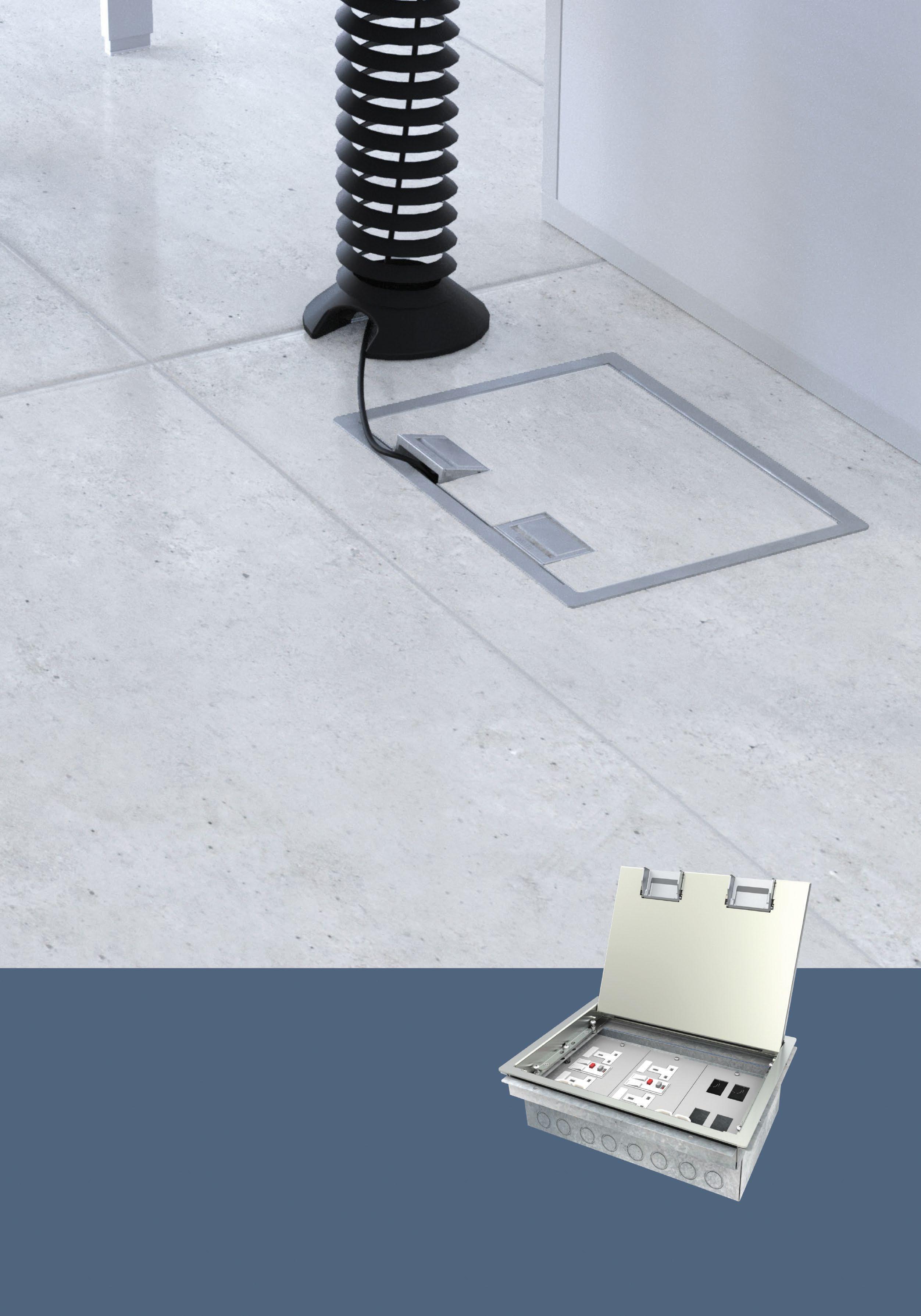
1 2 3 4 5
IN BRIEF
Be a CIBSE-approved CPD course provider
The CIBSE Directory of CPD Course Providers is a comprehensive list of educational learning that CIBSE members can receive in-house or in-person as part of their continuing professional development.
All courses are reviewed and assessed by CIBSE to ensure that the technical content is of a high standard and offers valuable CPD to members.
By being approved as a CIBSE CPD course provider, you will be recognised for running highquality CPD and meeting industry standards. Your course will be promoted to more than 21,000 building services professionals worldwide, via our online directory, and you will be able to use the CIBSE CPD Logo for marketing and on certificates.
To sign up, visit bit.ly/3TKqE29
Unlock your career potential
Register now for the CIBSE membership and professional registration workshop, and take your career to new heights. Registration demonstrates that you hold a level of competence and commitment that is recognised internationally. This online workshop is made up of four sessions run by CIBSE expert interviewers, starting on 2 April. The content has been designed to guide and support candidates through the application process.
Professional interviewers will give valuable insights into the preparation, assessment and interview stages, and provide candidates with feedback on their Engineering Practice Report draft. Don’t miss out on this opportunity to advance your career. Sign up at bit.ly/4ahf0RG
June date for AGM
The CIBSE Annual General Meeting will take place on 10 June 2024 as a hybrid event, online and at the Royal Society, 6-9 Carlton House Terrace, London, SW1Y 5AG. It will be followed by incoming President Fiona Cousins’ Presidential Address. Members will receive a Calling Notice next month and will find details of the AGM at www.cibse.org/agm
FARAH NAZ NAMED ‘MOST INFLUENTIAL WOMAN’ IN MIDDLE EAST
Congratulations to Farah Naz, CIBSE UAE committee member, on being named Most Influential Woman in the author category at the Filmfare Middle East’s Most Influential Women 2024 Awards.
Naz achieved the award for writing the UAE’s first book on net zero cities. It recognises her significant contribution to sustainability and the decarbonisation pathway for the region.

BSER&T looks at machine learning and overcooling
Journal editor Dr Andy Shea shares some of the highlights from the latest issue
Articles on overcooling, machine learning, and domestic consumption benchmarks feature in the latest issue of the Building Services Engineering Research & Technology (BSER&T) journal, published by Sage and CIBSE.
In the paper ‘Freezing from the heat: Building overcooling in Qatar’, Dr Abdulla Alnuaimi, of Qatar University, and collaborators from the faculty of engineering and design at the University of Bath, investigate the extent to which energy demand is driven by ‘overcooling’.
They report a recently developed overcooling metric and use ISO 7730-compliant sensors and occupant survey data, comprising 2,472 responses from eight morphologically diverse office buildings, to reveal the extent and impact of
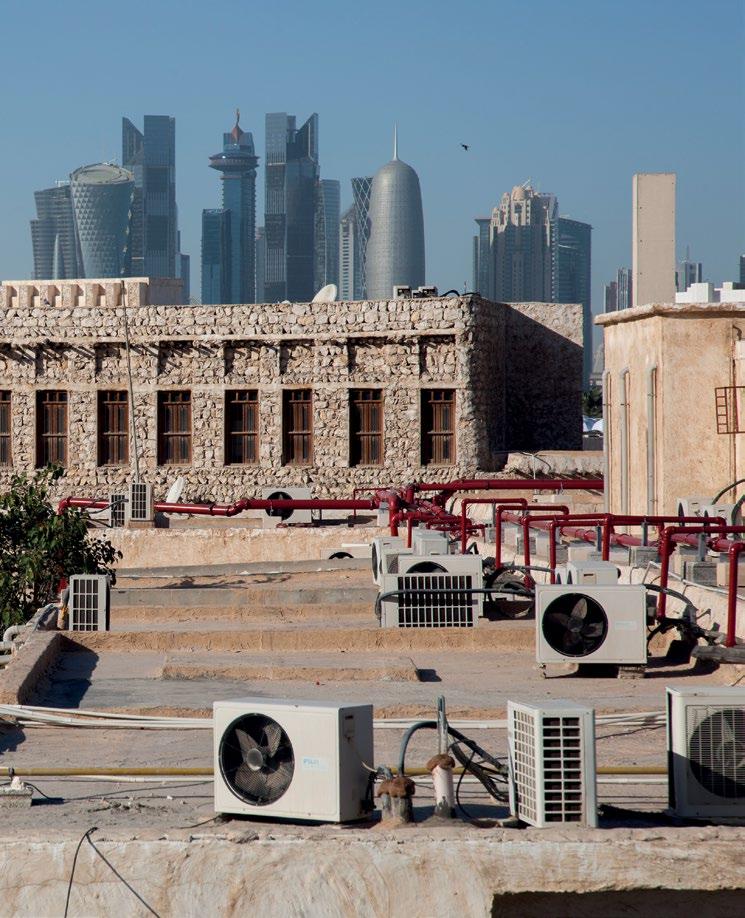
overcooling. The investigators recommend a revised comfort temperature that is 1.5°C warmer than the currently applied indoor temperature setpoint and results in substantial cooling energy demand reduction with increased thermal comfort.
Dr Faridah Djoko and colleagues from the Universitas Gadjah Mada, in Indonesia, and the Institute for Environmental Design and Engineering at UCL, propose a machine-learning model of indoor airflow characteristics for a classroom in Yogyakarta, Java, Indonesia. In their article ‘An indoor airflow distribution predictor using machine learning for a real-time healthy building monitoring system in the tropics’, the team describe how the machine-learning model was designed to predict indoor airflow distribution based on input data variables from external climate conditions and the operational status of ventilation utilities installed within the space, such as windows, fans, and/or air conditioning units.
A paper on domestic energy consumption benchmarks based on measured data produced from a large sample of London houses and flats has been submitted by lead author Daniel Godoy Shimizu, a research fellow in building physics modelling at the Bartlett, and UCL colleagues. The relationship between gas use and envelope thermal performance is explored. The results will be beneficial for anyone interested in better understanding domestic energy use, and informing decisions about future improvements to energy efficiency.
BSER&T is free to CIBSE members at www.cibse.org/knowledge
NEWS
CIBSE
12 April 2024 www.cibsejournal.com
Researchers measured the extent of overcooling in Qatar

IN BRIEF
Up to £4,000 for lighting researchers
Applications for the Society of Light and Lighting’s (SLL’s) Jean Heap Bursary are now open, with the winner awarded up to £4,000 in funding.
Hong Kong region celebrates 45 years
Annual dinner for CIBSE’s first non-UK region attracts 500 guests
The CIBSE Hong Kong Region celebrated its 45th anniversary with a dinner in March. It was CIBSE’s first non-UK region and remains the largest one, representing 15% of the Institution’s membership.
Around 500 guests attended the event, and a speech was given by guest of honour Victor Tai, JP, under secretary for housing, the Government of the HKSAR.
This milestone in the region’s history was an opportunity to recognise and celebrate the significant contribution and dedication of the CIBSE community in Hong Kong in expanding the influence of building services engineering globally.
Over the past four and a half decades, CIBSE Hong Kong has played a pivotal role in championing sustainability, energy efficiency and excellence in the built environment in the region.
It has forged long-lasting partnerships
with many organisations, which value its members’ contributions. Most notably, the partnerships with the Hong Kong Institution of Engineers, ASHRAE Hong Kong, and the Hong Kong Polytechnic University demonstrate the progress that has been made in collaborating to deliver a sustainable future for all.
Gary Chiang, the region’s chair, said: ‘CIBSE Hong Kong has achieved a huge amount in its 45 years and continues to go from strength to strength. We will keep raising CIBSE’s professional status in the region and highlight the impact and effectiveness of engineering solutions in Hong Kong.’
CIBSE President Adrian Catchpole added: ‘I would like to extend my sincere thanks to everyone who has supported CIBSE Hong Kong over the past 45 years, without whom our leadership in Hong Kong would simply not be possible – you are some of our greatest ambassadors and we are indebted to you all.’
First-aid bleed kits donated by West Midlands region
Two bleed kits have been donated to buildings in Hereford by the CIBSE West Midlands region.
The kits were provided by The Daniel Baird Foundation, funded by money raised at the West Midlands region annual dinner, and are designed to help people provide first aid to reduce blood loss in an emergency until professional medical assistance arrives. The donated kits have been placed in two pubs in Hereford, and training will be made available to staff.
Dr Lynne Baird MBE, who founded the charity after her son Daniel’s death after a stabbing, spoke at the West Midlands’ annual dinner in November. The Foundation raises awareness of the importance of having publicly accessible bleed-control packs and is working to get them into as many venues as possible. For more information, visit controlthebleed.org.uk

Entrants must submit a written paper, along with a short video, that outlines their research proposal. A panel of experts will select the winner, and will be looking for a study that has been designed to benefit both SLL members and the wider industry.
The deadline to apply for the bursary is 17 May. To find out more about how to enter, go to www.cibse.org/jeanheap
Enter now for Young Lighter 2024
The SLL Young Lighter competition is open to anyone under the age of 30 who is interested in light and lighting, regardless of background or education.
Entrants don’t need to write an academic paper to enter; they simply have to submit six slides on an original and creative idea about any aspect of light.
This competition presents a great opportunity to showcase young ligthters’ talent and vision to the lighting community and beyond. The winner will be awarded the title SLL Young Lighter and receive a cash prize of £1,000. Each of the finalists will also receive a cash prize.
The deadline to enter is the 26 April. To find out more and apply, visit www.cibse.org/younglighter
Ken Dale deadline approaching
All submissions for the Ken Dale Travel Bursary must be in by 1 May.
The winner will be awarded up to £4,000 to fund travel and research. If you are passionate about advancing your knowledge in building services, this is your chance to explore new horizons, elevate your career, and make impactful connections.
For more information about how the bursary works, visit www.cibse.org/kendale
CIBSE | NEWS
www.cibsejournal.com April 2024 13
Members of the CIBSE Hong Kong region
One of the bleed kits donated by CIBSE West Midlands Region
Training and development
CIBSE’s Training and Development (T&D) Panel aims to promote best practice across organisations by supporting their engineers to become professionally registered, says T&D Panel chair Simon Steed
CIBSE’s approved Training and Development (T&D) scheme is an in-company training programme that develops engineers’ skills and competence towards achieving Engineering Council registration and corporate membership of CIBSE.
Currently, 24 companies have approved schemes, and can use this approval to help when bidding for contracts or answering pre-qualification questions. For employees, approval ensures they are on a structured support system geared towards their skills and competence to achieve professional registration.
To help develop best practice, CIBSE’s T&D Panel –part of the education, training and membership group –supports companies with developing training schemes for all membership grades.
Comprising 16 members, and supported by four moderators, the panel meets three times a year.
Initial advice and reviewing applications
For a company looking to establish an approved training scheme, the panel will offer initial advice and then review its application to ascertain its conformity to CIBSE general guidelines and the Engineering Council criteria. The panel does not provide a prescriptive approach to scheme arrangements, but seeks to ensure that the capture of objectives is recorded and the learning point is recognised.
The panel will then visit in person, and review plans and documentation. If the application is approved, formal recognition is granted for three years.
Reaccreditation
With existing schemes, the panel reviews the training plan to ensure any updates from CIBSE or the Engineering Council have been incorporated.
Our visit is often virtual and includes a meeting with trainees to see how the scheme is progressing, and how challenges are being addressed. A review of the objective achieved reports, which record a trainee’s progress through the UK-SPEC competencies, and annual trainee report is part of this due diligence. We also meet with mentors to understand the challenges in supporting trainees and the best practices that are in place.
Annual forum
The T&D Panel runs a series of training events throughout the year, where they offer best-practice advice to T&D schemes and companies can meet to discuss the implementation and operation of training schemes.
We are always keen to hear from individuals willing to help and support us. Contact CIBSE on partnerships@ cibse.org for more information.
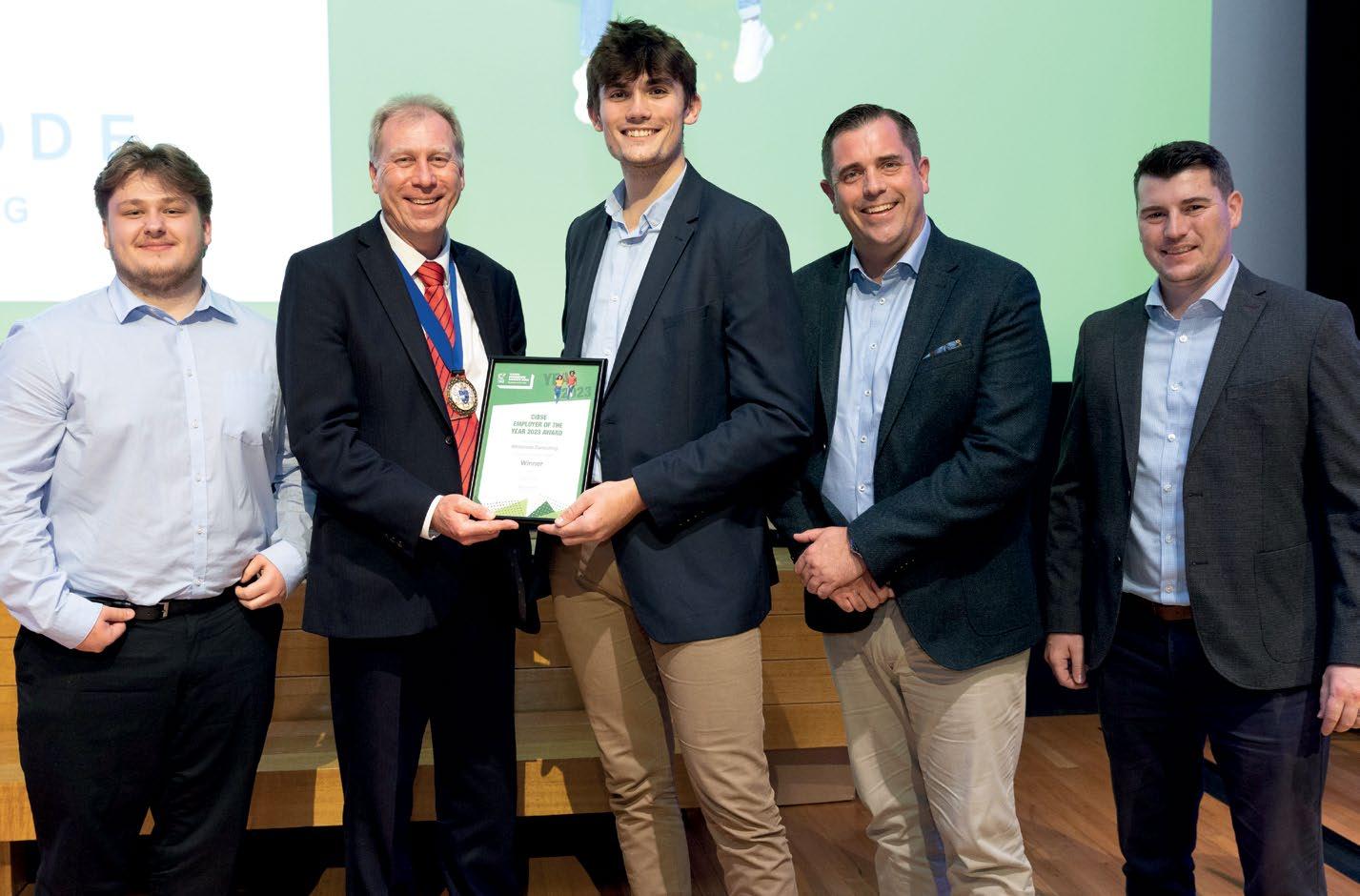
Unlocking the code to successful training
Whitecode Consulting is aligning its apprenticeships with the T&D scheme
To enhance the skills, competence and development of its workforce, building services engineer Whitecode Consulting has applied for approval to the CIBSE Training & Development (T&D) scheme to help it meet stringent quality standards. The application process involved taking existing internal training documents and processes, and developing them in line with CIBSE requirements.
Whitecode has been providing assistance to its trainees and graduates to gain CIBSE membership for more than 10 years, but taking advantage of the CIBSE T&D scheme will further improve training methods and processes.
Whitecode benefited from feedback and advice from the CIBSE panel, helping to improve the existing training scheme and ensuring trainees receive the best possible support. The approved programme has been met positively by employees, despite initial teething problems.
Whitecode currently has 17 trainees, who are all being encouraged to become chartered when their knowledge and experience allows. Three employees have already successfully completed their ACIBSE membership since the inception of the scheme a year ago.
Whitecode’s technical director Jason Tramontano, said: ‘We have an in-house apprenticeship scheme to train and give young people an opportunity to progress by training them as engineers. Our directors are highly involved with our apprentices, giving them first-hand access to a wealth of engineering experience. This is part of our vision to create a happy workforce with a desire to deliver excellence.’
ACCREDITATION & APPROVAL | CIBSE TRAINING AND DEVELOPMENT PANEL 14 April 2024 www.cibsejournal.com
Whitecode Consulting receives its CIBSE Employer of the Year Award 2023 from CIBSE President Adrian Catchpole
■ SIMON STEED FCIBSE is Training and Development panel chair, and Buildings Group Manager UK – PM Group
New members, fellows and associates
FELLOWS
Cherniayeff, Jacob
Sydney, Australia
Duff, Mona
Dublin, Republic of Ireland
Osaji, Emeka Efe
Wolverhampton, United Kingdom
Rich Joergensen, Dorte
London, United Kingdom
Riley, Oliver
Bayford, United Kingdom
MEMBER
Alvares, Ginelle Rosita
Newcastle Upon Tyne, United Kingdom
Aly, Abdelrahim
Dubai, United Arab Emirates
Al-Zwaylif, Abdulazeez Hassan Woking, United Kingdom
Amiryar, Mustafa Edries
London, United Kingdom
Anderson, Elizabeth Louise
Leeds, United Kingdom
Azam, Bilal
Edgware, United Kingdom
Baker, Stuart
Cleadon Village, United Kingdom
Bangs, Matthew Chelmsford, United Kingdom
Bateson, Leon
London, United Kingdom
Belfield, William Samuel
St Albans, United Kingdom
Bell, Jason
Chesham, United Kingdom
Bell, Matthew
York, United Kingdom
Birch, Harry
Tenbury Wells, United Kingdom
Bool, David John
Ingatestone, United Kingdom
Borcovici, Andrada
Birmingham, United Kingdom
Burrows, Patrick
Macclesfield, United Kingdom
Burton, Tom
London, United Kingdom
Buys, Aaron Littleton, United States
Cavagin, Craig
Newcastle, United Kingdom
Channa, Farouk Muhammad Haywards Heath, United Kingdom
Chan, Lok Kei
Hong Kong, Hong Kong
Chan, Shing Tung
Kowloon, Hong Kong
Chow, Tsz Chun
Tai Po, Hong Kong
Clapp, Luke
Bristol, United Kingdom
Clugston, Ryan Lisburn, United Kingdom
Cook, Amanda
Dunfermline, United Kingdom
Counsell, Ben
Bournemouth, United Kingdom
Cousins, Alexandra Oxford, United Kingdom
Csek, Laszlo
Dartford, United Kingdom
Davidson, Gregg
Bristol, United Kingdom
Dennison, Joseph
Banbury, United Kingdom
Devlin, Patrick Magherafelt, United Kingdom
De Vos, Timothy Michael
London, United Kingdom
Dickenson, Matthew
London, United Kingdom
Dobing, Jonathan
Leeds, United Kingdom
Edwards, Dane Cardiff, United Kingdom
Egan, Harry Caldicot, United Kingdom
Eldridge, Ian
Staines-upon-Thames, United Kingdom
Fairbrother, Thomas Holywood, United Kingdom
Field-Greenidge, Ian Maidstone, United Kingdom
FitzGibbon, Ozan
Frome, United Kingdom
Fong, Lap
Newcastle upon Tyne, United Kingdom
Fung, Siu Fung
London, United Kingdom
Gamwell, Jonathan Matthew
Glasgow, United Kingdom
Gialousi, Maria
London, United Kingdom
Gori, Giovanni London, United Kingdom
Granger, Matthew
Maidenhead, United Kingdom
Green, Thomas
London, United Kingdom
Grover, Rahul
London, United Kingdom
Guerra, Lidia
London, United Kingdom
Gunson, Alistair
Brighton, United Kingdom
Hamblen, Peter Birmingham, United Kingdom
Hayes, Paul Cinderford, United Kingdom
Heggie, Alexander Douglas
London, United Kingdom
Hett, Scott
Lancaster, United Kingdom
Ho, Man Kit
Hong Kong, Hong Kong
Horvath, Adam Newport, United Kingdom
Hubbard, Stephen
Ingatestone, United Kingdom
Husayni, Farah
Cambridge, United Kingdom
Irvine, Alexander
Chatham, United Kingdom
Jackson, Junior
Maidenhead, United Kingdom
Jacob, Robin
Huddersfield, United Kingdom
Karaca, Mustafa Tuncay
London, United Kingdom
Kechagidis, Anastasios
London, United Kingdom
Keen, George
Welling, United Kingdom
Khaja, Saifuddin
Hayes, United Kingdom
Kirrane, Joseph Thomas
Manchester, United Kingdom
Kwan, Kam Tsan
Hong Kong, Hong Kong
Lau, Ching Sing Jason
Hong Kong, Hong Kong
Law, Cheuk Yin
Hong Kong, Hong Kong
Lee, Choi Man
Tsing Yi, Hong Kong
Lee, Shing Yan
Hong Kong, Hong Kong
Leung, Chung Ming
New Territories, Hong Kong
Littlewort, Thomas
London, United Kingdom
Livingstone, Sean
Chorley, United Kingdom
Low, Wei Wen
London, United Kingdom
Mac Gabhann, Ruairi
Belfast, United Kingdom
Major, William
Mitcham, United Kingdom
Marincioni, Valentina
London, United Kingdom
Maskin, Saba
Bradford, United Kingdom
McCandless, Scott Adam
Hoddesdon, United Kingdom
McNaughton, Andrew
South Croydon, United Kingdom
Melarangi, Stephen
Runcorn, United Kingdom
Mitchell, Jamie
Northfleet, United Kingdom
Mortimer, Rory
Edinburgh, United Kingdom
Mui, Wai Man
Hong Kong, Hong Kong
Narro Vallejo, Ana Sofia
London, United Kingdom
Nutt, Tom
Outwood, United Kingdom
Orme, Shane
Bristol, United Kingdom
Ostrowski, Jakub
London, United Kingdom
Pistkova, Michaela
Bournemouth, United Kingdom
Pocze, Bence Viktor
London, United Kingdom
Ramaci, Roberta
Cambridge, United Kingdom
Rankin, Peter
Horsham, United Kingdom
Russell, Chris
Manchester, United Kingdom
Salehi, Bahareh
Greater London, United Kingdom
Saxby, Michael
Edinburgh, United Kingdom
Sellars, Ben
London, United Kingdom
Siddiki, Saif
Northwood, United Kingdom
Smith, Andrew
Higher Ashton, United Kingdom
Smith, Roy
Milton Keynes, United Kingdom
Soudi, Basheer
Cardiff, United Kingdom
Southgate, Sarah
Daventry, United Kingdom
Stivachtaris, Iraklis
Oxford, United Kingdom
Tam, Shing On
Tseung Kwan O, Hong Kong
Tse, King Yu
Hong Kong, Hong Kong
Tsoi, Kam Chiu Tony
New Territories, Hong Kong
Twardowski, Krzysztof
Bromley, United Kingdom
Wan, Wing Kit
Yuen Long, Hong Kong
Watson, Michael Witney, United Kingdom
Yeung, Kam Ning
Hong Kong, Hong Kong, Yin, Xianpu
Sutton, United Kingdom
Yiu, Cheuk Yin
Aberdeen, Hong Kong
Yoonus, Hamad
Green Quarter, United Kingdom
ASSOCIATE
Abbott, William Northfleet, United Kingdom
Ali, Syed Tusar
Camden, United Kingdom
Andrews, Patrick Clevedon, United Kingdom
Bagnall, Charlie
Sidcup, United Kingdom
Banyard, William Sheffield, United Kingdom
Baxter, Jack Lancaster, United Kingdom
Beard, Arthur
London, United Kingdom
Bradley, Josh Swansea, United Kingdom
Butt, Ben Honiton, United Kingdom
Dash, Jack Dublin, Ireland
Dunne, Michael Bolton, United Kingdom
Gagg, Ryan
Hull, United Kingdom
Giltrow, Alex Clevedon, United Kingdom
Gomes, Jeff Neston
Swindon, United Kingdom
Hally, Joseph Bexleyheath, United Kingdom
Heffernan, William Epsom, United Kingdom
Jackson, Andrew Eastleigh, United Kingdom
Kibrom, Eyob London, United Kingdom
Knox, Ronnie Cheshunt, United Kingdom Lee, Frederick Bristol, United Kingdom Lee, Scott Faversham, United Kingdom Mandia, Biatur Manchester, United Kingdom
Martin, Andrew Abridge, United Kingdom
McGhie, Alexis Miro London, United Kingdom
McIntosh, Alistair
Cardiff, United Kingdom
Munir, Mohammed Dewsbury, United Kingdom
Nielsen, Cameron Leeds, United Kingdom
O’Neill, Ryan Houghton Regis, United Kingdom
Parkin, Cameron Kirkham, United Kingdom
Rassam, Bandar Amin Cardiff, United Kingdom
Standerwick, Samuel Bridgwater, United Kingdom
Thomson, Ross Paisley, United Kingdom
Verwyst, Samuel Northfleet, United Kingdom
Warren, Joseph London, United Kingdom
Webster, Ben Southampton, United Kingdom
Whitfield, Thomas Poulton-le-Fylde, United Kingdom
Wills, Harrison
Newton Abbot, United Kingdom
LICENTIATE
Bratchel, Ashley
Bristol, United Kingdom
Brook, Jason
Bradford, United Kingdom
Buckley, Reece Matthew Wooburn Green, United Kingdom
Carr, Graeme
Dewsbury, United Kingdom
Colclough, Thomas Manchester, United Kingdom
Cook, Kurt
Billericay, United Kingdom
Daly, Shaun
Watford, United Kingdom
Davies, Alexander
Chester, United Kingdom
Davies, Jonathan Glasgow, United Kingdom
Elderton, Matthew Wellingborough, United Kingdom
Furlong, Thomas Leeds, United Kingdom
Gilchrist, Stephen Manchester, United Kingdom
Gough, Lauren
Orpington, United Kingdom
Haig, Matt
Croydon, United Kingdom
Havercroft, Liam
Hessle, United Kingdom
Humpage, Joshua James Birmingham, United Kingdom
Lake, Josh
Hessle, United Kingdom
Kelly, Gareth Keighley, United Kingdom
Leech, Kelsey
Exeter, United Kingdom
Leggitt, Thomas Nottingham, United Kingdom
McNeill, Finlay
Cameron Patrick
Swadlincote, United Kingdom
Sarieddine, Rabih
Dubai, United Arab Emirates
Shaik, Riyazuddin
Dubai, United Arab Emirates
Shaw, George Sale, United Kingdom
Sparrow, Jack
Brierley Hill, United Kingdom
Tariq, Uneeb
Glasgow, United Kingdom
Treanor, Tommy
London, United Kingdom
Wait, Georgia
Polegate, United Kingdom
Young, Graham
Chelmsford, United Kingdom
CIBSE | NEWS www.cibsejournal.com April 2024 15
■ DR ANASTASIA
CIBSE
Green gains
The Biodiversity Net Gain regulation will help green our cities, but Anastasia Mylona believes building professionals can do more to encourage nature-based solutions to take root
The Biodiversity Net Gain (BNG) requirement, published by the Department for Environment, Food and Rural Affairs, has been mandatory since 12 February 2024. Its aim is to create new, or improve existing, natural environments by requiring new developments to have a quantifiably positive impact on biodiversity, compared with what was there before. Developers will have to deliver a BNG of 10% – which means a 10% improvement in the quantity or quality of the natural environment.
For the first time, the BNG regulation provides a measurable target for the improvement of the natural environment, potentially leading to a wider uptake of nature-based solutions.
There is irrefutable evidence of the positive impact nature has on humans. Benefits include improvement in mental and physical health, increased productivity, mitigation of the urban heat island effect and overheating risk, and better indoor and outdoor air quality.

“A key challenge in our industry is quantifying the impact of nature-based solutions on the performance of buildings
Nature-based solutions are also key to adapting to and mitigating climate change, by improving flood management and water quality, riverbank erosion, biodiversity, and carbon sequestration. However, nature-based solutions are not widespread.
The House Of Lords Science and Technology Select Committee recently published the report Nature-based solutions: rhetoric or reality?, which looked at their contribution to reaching the UK’s net zero target. It noted that ‘while the government’s ambitions for nature-based solutions are admirable, there is a clear and present danger that they will not be achieved, and this could undermine the target of net zero by 2050’.
One challenge is the perception that green spaces are more costly and require higher maintenance. The lack of quantifiable evidence of social benefits reduces the ability to undertake cost-benefit analysis, and disincentivises government from regulating and funding them.
A key challenge in our industry is quantifying the positive impact of nature-based solutions on the performance of buildings. It is not, for example, easy to model their effectiveness in reducing the urban heat island effect in cities and overheating risk in buildings. A lack of quantifiable evidence could have contributed to the decision not to include green infrastructure as one
of the proposed mitigation solutions in the recently introduced Part O – the assessment and mitigation of overheating risk in new homes in England.
How can we overcome the challenges and support the uptake of nature-based solutions? Embed information on their benefits at all levels of professional training and education, but also inform clients, policy-makers and the public.
Identify existing success stories in other countries where policies and initiatives have made a measurable difference. Research industry and policy to quantify benefits, so professionals can better represent the long-term benefits of nature-based solutions and implement them in proposals.
A great initiative by the Climate Change Committee is looking to commission a series of projects to feed into the Climate Change Risk Assessment 4th report analysis. One of the projects will focus on urban heat, looking at the impacts and costs of adaptation at the national, city and building scales (bit.ly/CJHRI24).
A second project will look at the health impacts from extreme heat (mortality, morbidity and impacts on health services). The invitation to tender is due in mid-March 2024, and more information can be found at bit.ly/CJExHe24
The government will be convinced of the benefits of nature-based solutions if they are quantified – for example, increased productivity, health improvements, NHS savings, jobs creation, increased value of building assets, and savings on flood-recovery costs.
Government buy-in is important to implement naturebased solutions at national level (through planning and other policies) and local authority level (by providing resources to implement and regulate urban greening).
The London Plan sets a good example of a local authority requiring all new developments to include urban greening. London has the resources to regulate the implementation of such policy closely, but not all local councils have the funding and knowledge to do the same.
Increasing public understanding of the benefits of green spaces and biodiversity is key to the uptake of naturebased solutions. Changing the narrative from ‘nature for nature’s sake’ to ‘nature for people’ will be fundamental to changing established perceptions.
POLICY | ANASTASIA MYLONA 16 April 2024 www.cibsejournal.com
MYLONA is technical director at
Preparing for the worst
CIBSE’s overheating session at Futurebuild detailed the risks to care homes and apartments of a warming planet. Alex Smith hears from modellers and academics about the extent of the threat posed to buildings and the measures that could be taken to increase the climate resilience of future designs
The rapidly warming climate in the UK is putting the health and comfort of building occupants at increasing risk. A number of CIBSE projects are focusing on measuring the resilience of buildings and determining what mitigation measures must be taken.
At last month’s Futurebuild conference at London’s ExCeL, CIBSE hosted a session on overheating in the built environment. Four speakers, on a panel chaired by CIBSE’s new research manager, Zoe De Grussa, covered overheating in care homes, the impact of new CIBSE Weather Files, and upcoming changes to CIBSE’s TM59: Design methodology for assessing overheating in homes
Professor Rajat Gupta, from Oxford Brookes University, and Professor Anna Mavrogianni, from UCL Bartlett School Environment, Energy and Resources, shared findings from the ClimaCare: Climate resilience in care homes project (bit.ly/CCare2020).
After extensive monitoring of nearly 50 care homes in the UK, the project team found extensive overheating that was ‘pronounced and long’, according to co-investigator Gupta. He said that data from summer 2022 showed temperature peaks into the high 30s and median indoor temperatures of around 25°C. Temperatures during occupied hours in London care homes were 1.5 to 2.1°C higher than the rest of the country, he added.
Occupier surveys found that staff were much more sensitive to heat, with respondents saying they felt hot from 28-29°C, compared with residents, who said they felt hot when temperatures reached 32°C.
The project looked at interventions to reduce overheating and their effectiveness was quantified through building performance simulations, said Mavrogianni. It found that passive measures could suffice in care homes in the 2020s, when modelling predicted an increase of internal temperatures by 2°C. By 2050, however, air conditioning would be required to maintain thermal comfort, as modelling suggested 4°C temperature increases in care homes, said Mavrogianni, who added that – in a warmer climate – active cooling measures should be combined with passive ones to minimise cooling loads.

“Construction age was a key indicator of risk, with staff and residents in older, heavyweight buildings less likely to overheat in summer”
Construction age was a key indicator of overheating risk, with staff and residents in older, heavyweight buildings less likely to overheat in summer than those in modern, lightweight buildings, said Mavrogianni.
Hailun Xie, environmental data scientist with CIBSE and the University of Exeter, discussed the new CIBSE weather files, which are based on the latest Met Office climate data predications, UKCP18, and will be published later this year. Two versions of the weather files have been created using UKCP18, with the second version aiming to better emulate extreme weather events.
Xie said modelling of a case-study flat in London found that overheating risks could increase significantly in future, with more frequent and intense heat events. The CIBSE weather files would be grouped by areas of similar climate, rather than geographical proximity, added Xie, who said a digital tool is being developed to improve weather data
accessibility and allow long-term planning of future building energy systems.
Inkling founder Susie Diamond gave an update on TM59, which was adopted into Part O of the Building Regulations in 2021. She said the latest version would hopefully be included in the Future Homes Standard, due in 2025. TM59 is a dynamic thermal modelling methodology that designers can use to meet Approved Document O, which requires mitigation against overheating. To comply with TM59, criteria must be met. Currently, temperatures in bedrooms from 10 pm to 7 am shall not exceed 26°C for more than 1% of annual hours. The proposed update is that the overheating criteria will be based on the number of summer nights where bedrooms exceed a night-time mean threshold temperature, and temperatures from 26°C to 28°C are being tested.
Other proposals are a new gain profile for home offices, the modelling of ceiling fans (with an algorithm based on the ASHRAE standard), and a night-time bedroom window opening profile. The team is also looking at allowing the modelling of open internal doors at night (but not bedroom doors).
Diamond said TM59 would be published in the summer and updated with the latest weather files. She hoped changes would be adopted by Part O.
For more information on TM59 and weather files, visit: bit.ly/CJTM59 and www.cibse.org/weatherdata
FUTUREBUILD | OVERHEATING
www.cibsejournal.com April 2024 17
CIBSE’s new research manager, Zoe De Grussa (with the mic), chaired the session on overheating
Hywel Davies HonFCIBSE may have retired from CIBSE, but Alex Smith discovers he is still at the forefront of building safety reform and will continue to cajole industry and government to strive for safer buildings
MAKING THE WORLD A SAFER PLACE
Hywel Davies HonFCIBSE has had a long and illustrious career in the building services industry, spanning 40 years, but he’s not one to dwell on the past.
For this interview, which marks his retirement from CIBSE, Hywel was clear he wanted to focus on issues facing engineers in the months and years ahead.
The main concern for engineers, he says, must be with meeting the requirements of the Building Safety Act. He calls it the biggest upheaval facing the construction industry since World War II and has spent much of the past six months explaining to audiences the magnitude of the changes.
Anyone familiar with Hywel’s public speaking will know he is a great orator. He has a skill for communicating the most complex information in a clear and engaging manner, and does so with warmth and wit.
Having spoken extensively, Hywel is concerned that the industry doesn’t understand the significance of the changes. ‘What worries me is that people think the Building Safety Act is a response to Grenfell and a fire in a block of flats. It isn’t – it’s a wholesale reform of the Building Regulation
regime for all buildings, from a studio shed to The Shard,’ he says.
Some sectors are having to come to terms with the safety regime change sooner than others. Last month, the chief executive of Local Authority Building Control, Lorna Stimpson, wrote to the Building Safety Regulator warning that councils would stop providing services unless a deadline for building control officers to prove competence was extended. She said that ‘a significant
HYWEL’S WORKING LIFE
number of building control professionals will not achieve successful certification and, therefore, registration before the 6 April deadline’. In response, the Health and Safety Executive extended the deadline for passing the assessment by 13 weeks, to 6 July.

Hywel completed his chemistry degree at Swansea University, where he stayed to do his PhD on amorphous silicon semiconductor material for photovoltaics. His first paid job at the height of the Cold War was using climate-based modelling to predict the spread of radiation from a nuclear attack. He spent 10 years at the Building Research Establishment, testing construction materials. Tasks included working on hydrogen embrittlement in high-tensile steel and researching epoxy-coated reinforcement bars that ensured ‘millions wasn’t wasted putting a material that didn’t work into road infrastructure’. It was here that he first got involved in construction product standards committees. In 2007, Hywel became CIBSE’s technical director. One of his proudest achievements was making CIBSE technical guidance available on the online Knowledge Portal, enabling members to access it easily. In May 2017, he joined the Building Regulations Advisory Committee. A month later, after the Grenfell Tower fire, he found himself at the heart of the regulatory response to the disaster. In January 2018, Hywel was asked to chair an Expert Group to review the use and format of Approved Documents. Under his technical leadership, CIBSE published the EmergingfromLockdown series with the Royal Academy of Engineering during the Covid pandemic. Free to all, it offered guidance on ventilation, lift use, air cleaning, and recommissioning of buildings.
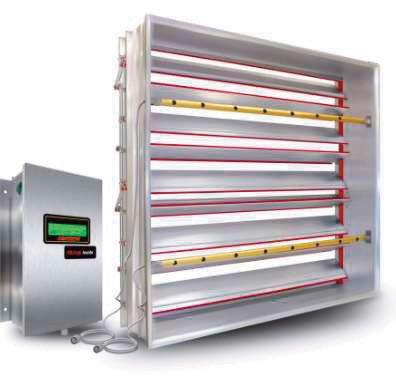






Hywel has sympathy with local authority building control, but feels they were forewarned. ‘I know the public sector is under pressure, but given all that’s happened over Grenfell, and the length of time the public sector has been on notice that things are going • Accurate and Stable HVAC Measurements Down to Still Air • Premier Specified Airflow Measurement Device



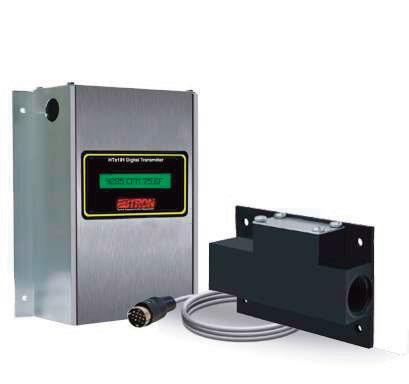
• Reliable Thermal Dispersion Technology




• No Onsite Calibration is Required

INTERVIEW | HYWEL DAVIES 18 April 2024 www.cibsejournal.com
cooperward.co.uk +44 118 971 4971 enquiries@cooperward.co.uk

“There’s a lot industry can do to take ownership. People have to demonstrate they’ve exercised reasonable skill and care”
‘It suggests that people out there managing these buildings are paying a bit more attention,’ Hywel says. ‘It’s better than saying “I’m not sure it’s an HRB. I’ll wing it until somebody turns up with a summons”.’
After registering, HRB owners have six months to compile a safety case report that identifies risks to their buildings. People have to look at their building and think ‘what could possibly go wrong’, says Hywel.
As chair of the Building Regulations Advisory Committee, he helped set out the new safety regime, and will continue to be prominent as a member of the Building Advisory Committee, which is responsible for keeping the Building Safety Regulator abreast of emerging issues in the sector.
He was also recently part of the working group that created the guidance on damp and mould for rented housing providers, which followed the death of two-year-old Awaab Ishak as a result of mould in his home.
In addition, Hywel is working for the Construction Industry Council, which brings together professional bodies to speak with one voice. He feels his consensual approach may be the reason his advice is sought. ‘I appear to have this quite unusual status,’ he says. ‘I’m widely respected, trusted for keeping my mouth firmly shut, and apparently have some ability to broker a degree of understanding and consensus between different parties.’
His retirement event was held at St Andrew Undershaft church in the City of London, where Hywel, who has a wife Jackie and three children, has worshipped for 20 years. His faith is an important influence on his attitude to work. ‘Whatever you do, do it with all your strength, as to the Lord. That’s all I try to do in my life,’ he says. ‘If I’ve made a difference, it’s not because I’ve set out to do that, it’s because I’ve tried to do things well.’ CJ to change, I can’t avoid feeling frustrated it got to this point,’ he says.
Another area of irritation is the delay in government response to recommendations in the Independent Review of the Construction Product Testing Regime. However, Hywel says professionals can’t sit and wait for government to devise a new regime. ‘There’s a lot industry can do to take ownership’ he says. ‘Competent engineers shouldn’t be asking civil servants to tell them what to do. People have to demonstrate that they have exercised reasonable skill and care.’
One area of building safety in which there does appear to be engagement is the registering of higher-risk buildings (HRBs), which had to be done by 6 October. Almost 14,000 buildings have been registered –2,000 more than expected.
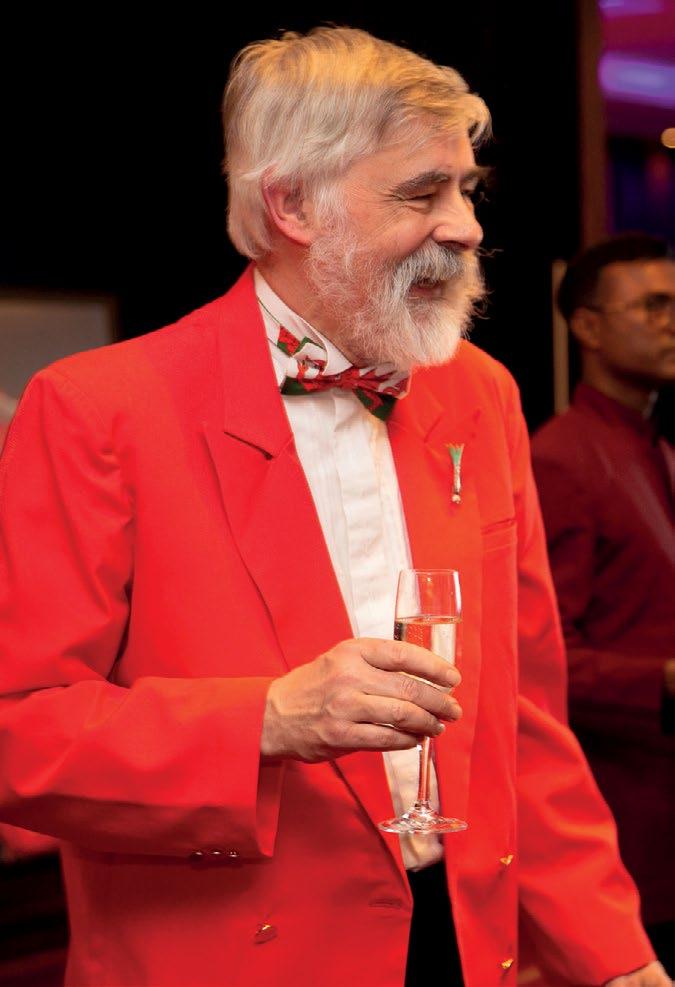
CHAMPIONING SAFE, SUSTAINABLE BUILDINGS ON A GLOBAL STAGE
CIBSE President Adrian Catchpole FCIBSE
Hywel’s legacy is one of a visionary leader in the field of building services engineering, whose passion for clear policy, world-class guidance and effective implementation has pushed boundaries within our industry.
Hywel’s accomplishments include overseeing the restructuring of CIBSE’s Knowledge Management and Generation functions, the fundamental changes to Part L of the Buildings Regulations in 2006, and successfully encouraging government to address overheating in buildings (Part O), which came into being in 2021.
For me, one of Hywel’s greatest achievements was to lead the strategic vision for CIBSE to make its publications freely available to members through the CIBSE Knowledge Portal. This action has revolutionised our sector, by making our guidance and codes more widely available to all construction professionals.
Tim Dwyer FCIBSE
Hywel’s career exemplifies a steadfast commitment to safe and sustainable building practices.
I had the privilege of collaborating with Hywel in reviving the CIBSE Technical Symposium – a critical platform for peerreviewed research, technical advancements, and innovation.
Hywel’s influence transcends national borders. He actively participates in institutions including ASHRAE and Rehva, and his representation of CIBSE on numerous international and UK committees has demonstrably shaped the standards and guidelines that ensure safe and healthy built environments, while moving the industry towards net zero. His encyclopaedic knowledge of regulations positions him to continue his impactful work for years to come.
life
Vince Arnold FCIBSE, CIBSE Board member and trustee Hywel has been a strong influence on the strategic direction of our Institution. He commands the respect of the Institution and its Members around the world. There have been many occasions when Hywel’s natural ability to hold an audience during his presentations delivers the message at all levels. I have seen first hand his natural ‘command’ of the room.
Hywel is the only engineer I know that has been named and quoted more than once in the House of Lords.
I wish Hywel all the best for the future and thank him for his personal support and the support he has given the Institution.
www.cibsejournal.com April 2024 19 INTERVIEW | HYWEL DAVIES
Three CIBSE fellows on Hywel Davies’ legacy at CIBSE
Hywel says his Christianity guides his working
Hywel Davies joined CIBSE in 2007

TAKING THE WATERS
SGA Consulting was crowned CIBSE’s Building Performance Champion following the retrofit of the historic York Guildhall. Andy Pearson explains how the project team exploited the nearby River Ouse while protecting the listed site

PROJECT TEAM
Client and project manager: City of York Council
Architect: Burrell Foley Fischer
M&E consultant: SGA Consulting
Structural engineer: Arup
Quantity surveyor: Turner & Townsend
Main contractor: Vinci Construction
M&E contractor: Wheatley M&E
Building Services

he Guildhall is a collection of some of York’s most historic buildings: a complex of Grade I, II and II*-listed properties built around a 15th-century Guild Hall and situated on the north bank of the River Ouse.
TIt served as the city’s seat of governance for more than 600 years, but when York City Council relocated, it wanted to refurbish the historic complex and turn it into a digital hub for the 21st century.
Together, architect Burrell Foley Fischer and SGA Consulting set out to deliver the council’s vision.
Alongside the creation of the digital hub, the project involved the refurbishment of the listed elements of the scheme to improve accessibility, occupant comfort and energy efficiency. It also included a new office extension and riverfront restaurant at the side of the complex.
The scheme’s numerous listed elements made for an extremely challenging refurbishment. Except for the listed cast iron
radiators in the Victorian council chamber, all of the existing building services had to be replaced, as they were long past their prime. ‘We started by asking what interventions we could make to the listed buildings and then set about working out how to deliver these in the best possible way,’ says Bart Stevens, a director of SGA Consulting.
The building’s location, adjacent to the River Ouse, made a river source heat pump (RSHP) the obvious solution to heat and cool the building. ‘The first time I went to the site, I took one look at the river and said “of course we’ve got to use this”,’ recalls Stevens.
Permission to use the river was obtained from the Environment Agency and the Canal & River Trust, and an unobtrusive route for the abstraction and discharge pipework was devised from the basement plantroom to the river.
Under the new scheme, 110kW of simultaneous heating and cooling is provided by a two-circuit, reverse-cycle RSHP. To optimise its efficiency, the heating
20 April 2024 www.cibsejournal.com
CASE STUDY | YORK GUILDHALL
“The first time I went to the site, I took one look at the river and said ‘of course, we’ve got to use this’”


circuit runs at 50oC flow/45oC return, while cooling is at 6oC flow/12oC return. The RSHP is also designed to recover heat if areas of the building require simultaneous heating and cooling.
A pragmatic fabric-first approach was adopted by SGA Consulting in developing the servicing strategy. Using the heat pump to service the new office extension and restaurant was relatively straightforward, because its fabric thermal performance exceeded Building Regulations minimum. However, the listed status of many existing elements and spaces meant opportunities to improve fabric thermal performance were limited. This had a major impact on how and where the heat pump-derived heat could be used.
The lower temperature of the heat pump heating circuit made it ideal as a heat source for underfloor heating, because the large floor area helps compensate for the lower temperature of the emitter. The heat pump is also used to supply heat to fan coil units (FCUs) in some of the
WATERBORNE LOGISTICS
In addition to providing a source of free heat, the proximity of the River Ouse proved beneficial during the refurbishment works. The Guildhall’s location, in the centre of medieval York, made it difficult to get construction materials and equipment to the site and to remove waste from it.
Main contractor Vinci Construction overcame this particular challenge by using the river to transport heavy equipment and materials to and from the site by barge. Even this solution was not without its difficulties, however, because the river levels can rise by up to 5m after heavy rain in surrounding hills. At such times, deliveries to site were delayed because Vinci’s barge was unable to pass beneath the town’s bridges.
Fortunately, building services contractor Wheatley M&E Services was able to bring its materials in by land, without the need of the river, with the ‘exception of transporting the heat pump to site’, says Stevens.
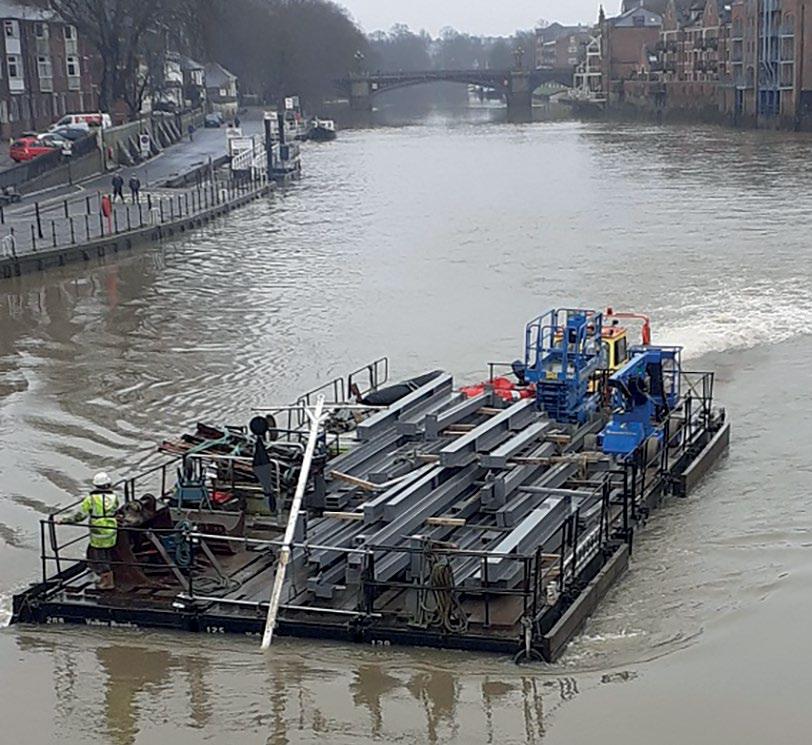
office spaces. These incorporate oversized heating coils to compensate for the circuit’s lower flow temperatures.
Operating in reverse mode, the heat pump uses river water, extracted at up to 22oC and returned at 25oC, to also provide chilled water to the FCUs in south-facing river frontage rooms. ‘These rooms required cooling as well as heating, so we were justified in replacing the existing radiators with modern FCUs in these rooms,’ explains Stevens.
SGA Consulting has also managed to hide four cooling-only FCUs beneath raised daises in the council chamber. This helps keep the space comfortable when the council is in session and the room is full of people. The consultant has
www.cibsejournal.com April 2024 21 CASE STUDY | YORK GUILDHALL
Some materials were transported by river
York Guildhall, on the River Ouse
The office extension and riverfront restaurant


also resurrected the original Victorian ventilation system in the chamber to further improve comfort – see box ‘Reinstating Victorian natural ventilation’.
A major benefit of using a RSHP to provide cooling was that it removed the need for an external air cooled condenser, which would have been noisy and visually obtrusive in this overlooked, congested and historic part of York.
The RSHP is housed on a plinth in the potentially flood-susceptible basement plantroom – see box. ‘Keeping the river out’.
Alongside the electric RSHP, the
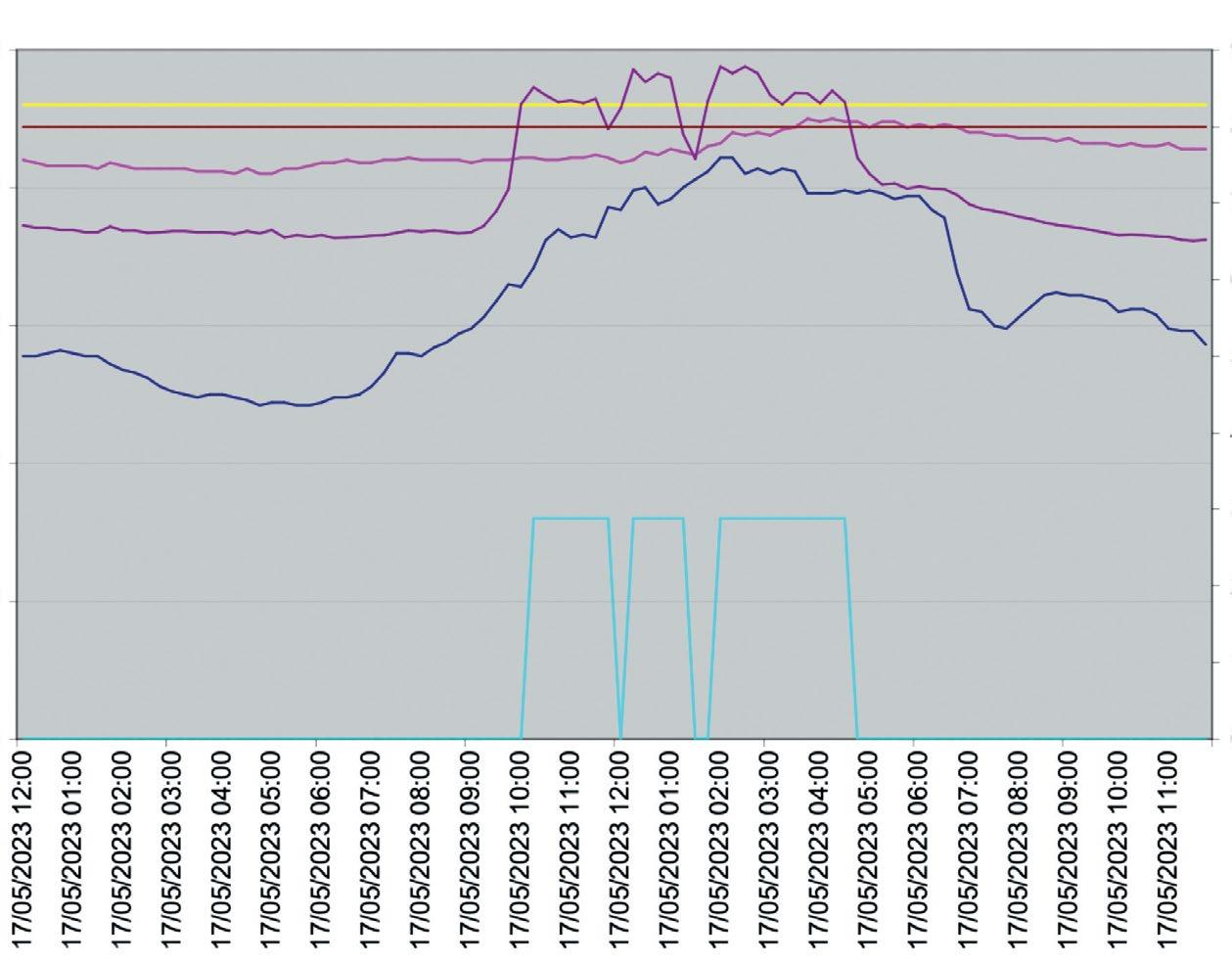
scheme also includes three new gas-fired boilers. These supply a conventional lowpressure hot water heating circuit at 80oC flow/70oC return to furnish the cast iron radiator circuit in the Victorian parts of the building, along with two domestic hot water calorifiers that serve the new kitchen and toilet blocks. The boilers also provide back-up heat to the heat pump circuit, should the heat pump fail.
‘We used the heat pump in all of the spaces where we could make it work, but the heat losses are so great in the Victorian areas, and the floor areas fixed, so we had to reuse existing cast iron radiators and gas boilers to provide sufficient heat,’ explains Stevens.
Heat losses in the 15th-century Guildhall were also particularly high. The building’s Grade I listing meant that it was too difficult to enhance the thermal performance of the solid stone walls and there were insufficient funds to add secondary glazing to the windows. The team was, however, able to hide additional insulation in the roof as part of the lead-replacement works.
Bomb damage during World War II meant that the roof, floor, and some upper walls of the Guildhall had either been rebuilt or replaced, so English Heritage permitted underfloor heating to be installed in the 7m-high space. Even so, heat losses were so great that the heat pumpsupplied underfloor heat system alone was insufficient to keep the space comfortable.
‘The heat losses were too high and we were very limited as to the interventions we could make,’ says Stevens.
SGA Consulting’s solution was to supplement the underfloor heating with trench heaters concealed within the floor and connected to the higher-temperature
Proof the solution works: Graph shows air quality with the council chamber in use. CO2 level (purple line) exceeds set point (brown line). Vents open (light blue), internal temp stays cool (magenta). Council vent Outside (oC) Space temp (oC) Vent temp SP (oC) 25 20 15 10 5 0 Temperature ( o C) CO 2 (PPM) 900 800 700 600 500 400 300 200 100 0 Vent enabled CO2 (PPM) CO2 SP (PPM) Figure 1: Changes in temperature and CO2 when vents open in council chamber 22 April 2024 www.cibsejournal.com CASE STUDY | YORK GUILDHALL
The new extension to York Guildhall

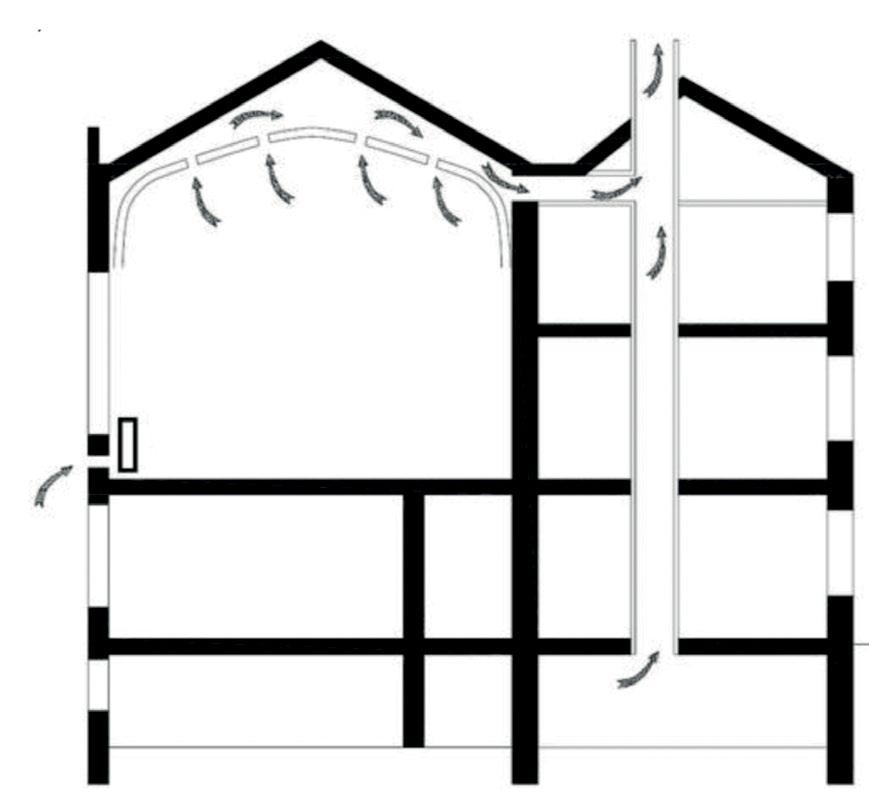
Council chamber
Radiator
gas-fired boiler circuit, for use on cold winter days.
‘When the outside temperature drops below 5oC, the trench heaters turn on,’ Stevens explains. As a consequence, trench heating will only deliver 12% of the Guildhall’s annual heating demand, with the rest provided by the heat pump circuit.
‘This type of mixed use shows how heat pumps can be used to provide heating to old buildings where the rate of heat loss would be too high otherwise,’ says Stevens.
After the scheme’s completion in 2022, SGA Consulting followed a soft landings regime for two years, to optimise performance of the building services. Lessons learned include:
n Keeping the Guildhall underfloor

heating off on cool summer days because of the long time lag in delivering heat
n Turning off the heat to the domestic hot-water systems over weekends when appropriate
n Reminding the client of the two-speed control for kitchen ventilation.
The strategy to re-use a centuriesold building, revitalising it for use for future generations, achieved significant savings on embodied carbon emissions. Equally importantly, the project succeeded in securing the future of the Guildhall complex; the University of York is taking a long-term lease on the historic buildings to create a business
OPERATIONAL ENERGY AND CARBON
Actual metered energy use:
■ Electricity: 209,027kWh/yr, of which heat pump consumption is 21,349kWh/yr
■ Gas: 167,376kWh/yr
■ Heat pump output: 86,354kWh/yr
There is no onsite renewable energy because the planners would not permit their installation on the listed buildings.
KEEPING THE RIVER OUT
The River Ouse, which glides past outside –and sometimes inside – the Guildhall complex, is an asset and a liability.
In addition to being a source of heat and coolth to the scheme, it’s a hinderance when the river floods.
Heavy rainfall in the Yorkshire Dales and headwaters of the rivers that drain into the Ouse can raise its level by up to 5m. As a consequence, there have been frequent water incursions into the basement of the Guildhall complex, with the highest recorded level being 1.7m above the basement’s listed flagstone floor.
To help withstand incursion of the river waters up to the year 2100, the armoured glass in the basement windows overlooking the river has been replaced with more robust glass. The existing flood doors have also been replaced with sturdier models, to help protect the subterranean space against the threat of flooding.
Even with these measures in place, however, the basement is still vulnerable to water incursion, because water pressure forces groundwater up through gaps in the flagstone floor and into the basement plantroom.
SGA Consulting has installed sump pumps in the space to help control the seepage, keeping the incision to a maximum depth of 20mm. ‘It is not ideal; the floor is listed and cannot be replaced, so we have had to keep the plant clear of the floor by mounting it on 100mm high plinths,’ says Stevens.
City of York Council also had concerns that, if York was to flood so badly that there was an electricity blackout, it would prevent the sump pumps from working. Increased resilience has been provided by installing an additional access hatch at high level, to enable an electrical supply to be provided to the sumps from an external generator.
Space was found on the floor above for all the major electrical switchgear. All electrical supplies in the basement plantroom are routed at high level, dropping down to the plant.
In addition, non-return valves have been installed on the foul drainage to prevent back-flow.
www.cibsejournal.com April 2024 23
Boiler room
CASE STUDY | YORK GUILDHALL
The original council chamber ventilation system
Pipes taking water from the Ouse to the river source heat pump
The interior of the 15thcentury York Guildhall
“With the challenges we face in renovating millions of existing buildings, the York Guildhall project shows what can be achieved”
hub for spin-off firms from the university. This will contribute to the city’s future and is proof that historic buildings can be refurbished and remodelled to meet contemporary needs.
SGA Consulting’s approach to the project certainly impressed the judges at this year’s CIBSE Building Performance Awards, where the project won a host of awards, including Building Performance Champion.
The judges said of the scheme: ‘With the challenges we face in renovating millions of existing buildings, the York Guildhall project shows what can be achieved to deliver sustainable building refurbishment, minimise embodied carbon and deliver such a project with the most difficult site-access conditions’. CJ
REINSTATING VICTORIAN NATURAL VENTILATION

SGA Consulting has resurrected the original Victorian ventilation system to help alleviate stuffiness and overheating in the Grade II*-listed council chamber.
The original building services proposal incorporated a series of FCUs to keep the council chamber comfortable. The units were to be placed outside the chamber and holes knocked through the wall to enable the units to circulate air. Historic England was not keen on the modifications, so an alternative solution had to be devised.
‘I said “I bet the Victorians had a way of ventilating the room”,’ recalls SGA Consulting’s Stevens. Low-level ventilation inlets had been identified in the external walls, hidden behind the cast iron radiators which also provide preheating to air entering the chamber. ‘After hunting around, we managed to find some holes in the ceiling, concealed behind rose-shaped bosses, which allowed the warmed air to exit the chamber and enter the roof space,’ says Stevens

(see photo left). In the roof, the ventilation system was originally linked into the flues from the coal-fired boilers using wooden ductwork (see diagram, p23). The system exploited the pressure differential caused by the upward flow of air from the boiler flues to induce airflow through the council chamber.
SGA Consulting set out to reinstate the original ventilation system, to enhance the airflow without any discernible visual impact in the council chamber. The coal-fired boilers are long gone, but the system still uses the original boiler flue. Because of fire regulations, the Venturi effect from the boiler flue had to be abandoned, so the airflow is now enhanced through the addition of a small axial flow fan.
To further control airflow in the council chamber, motorised dampers (controlled on CO2 and temperature) have been added to the low-level intakes behind the radiators. Should they so wish, councillors also have the option of opening windows.






0118 9821 555 DrainMajor Wastewater Pumping System www.jung-pumps.co.uk Tank Construction Polyethylene Every time you specify a DrainMajor Tank, we will donate £5 to the Rainforest Trust. Email davidj@pumptechnology.co.uk so that we can donate on your behalf Specify pumping systems with recyclable tanks to support the environment! 24 April 2024 www.cibsejournal.com CASE STUDY | YORK GUILDHALL
Boilers are used on very cold days because of high heat losses in the historic buildings
Recognising and rewarding excellence in façade engineering.
cibse.org/FacadeAwards
Closing date: Friday 31 May 2024
Scan the QR Code for this year’s categories
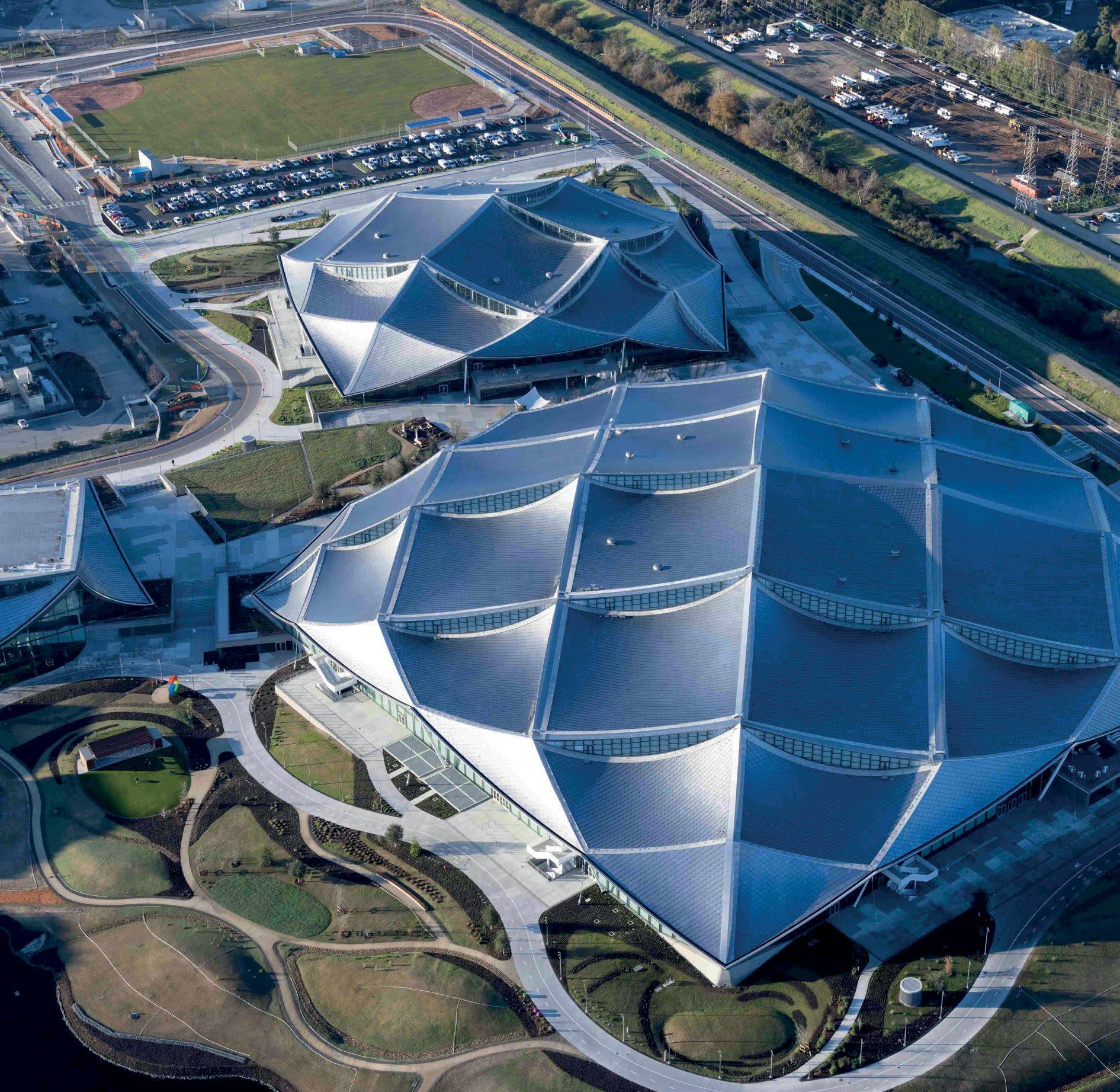
Entries
open
are now
CIBSE and Studio PDP have investigated how 10 housing projects are performing 10 years after they were retrofitted. The study highlights successes and uncovers crucial lessons for the future of housing retrofits
REVISITING RETROFITS 10 YEARS ON
Retrofit Revisit is a building performance evaluation (BPE) of 10 retrofitted homes, approximately 10 years after the original retrofit works.
The project took place over winter 2022-23, and aimed to gather lessons on retrofit and building performance techniques, which have moved on considerably in 10 years.
Its report looks at how robust, meaningful and useful data are collected in an affordable and accessible manner, and is intended to give occupants, designers and decision-makers a good understanding of BPE.
Analysis of the homes aimed to find out what had stood the test of time, and what lessons there were to learn. The team was particularly interested in moisture, insulation options (moisture and combustibility), and the degradation of original solutions (for example, fabric condition and airtightness).
All 10 sample homes were considered best practice or exemplar at the time, and employed a whole-house ‘deep’ retrofit approach. Six were part of the 2009-13 Retrofit for the Future programme.
Six of the properties dated from pre1919, nine were houses (one a flat), and they were a mix of housing association and privately owned properties.
Their insulation strategies varied, with a mix of external, internal and cavity insulation, and permeable and impermeable materials. Heating, hot water and ventilation systems were also varied.
A two-tiered BPE approach – core and detailed scope – was followed for the project (see panel, ‘Building performance evaluation techniques’).
The results: Energy performance
In most of the homes, no major change has been observed in energy performance compared with the original retrofit energy use. The retrofit has delivered long-term benefits, with energy use still significantly lower than in the average stock.
Tellingly, most homes have reported being satisfied or very satisfied with their energy bills. Where space-heating demand could be estimated, it is in line with best practice retrofit standards, significantly below the national average.
The energy use intensity (EUI) is, on average, ~80kWh·m-2 GIA per yr, which is
“The retrofit has delivered long-term benefits, with energy use still significantly lower than in the average stock”

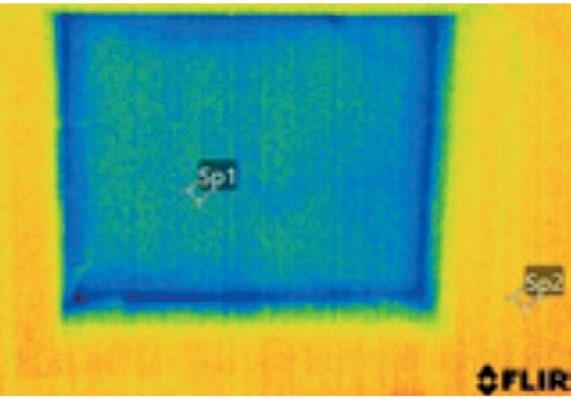
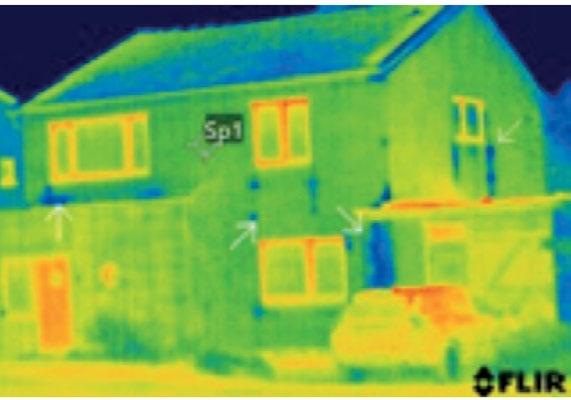
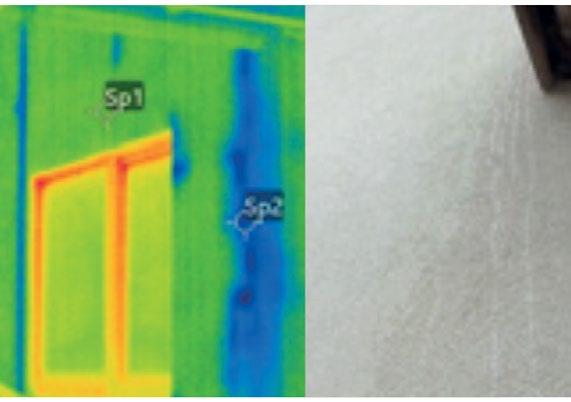

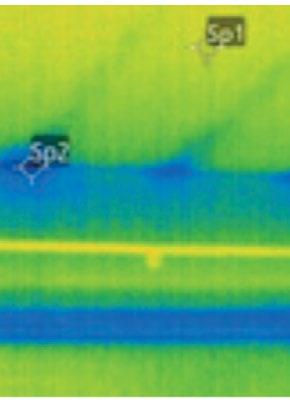


very favourable compared with UK data (see table, opposite).
Fabric
Fabric efficiency improvements have been shown to be very effective in the long run, with air leakage and heat demand remaining very low compared with the national average. The good level of performance is indicated by the average for the homes of 2.54m3·h-1 m-2 @ 50Pa (up from an average of 1.98 ~10 years ago). Airtightness in all homes is still significantly better than pre-retrofit (77% better as pre-retrofits achieved ~11m3/h.m 2@50Pa).
The most common weak point reported by the projects was the lesser reliability
BUILDING PERFORMANCE EVALUATION TECHNIQUES
There were two approaches: core and detailed scope. The core scope covered all case studies and included a Soap retrofit questionnaire, an energy audit, and one month of winter monitoring, including energy readings, temperature and relative humidity. There was also SmartHTC (heat transfer coefficient) tests, a BTS mould risk indicator, and blower door and pulse airtightness testing. The detailed scope covered four to five case studies and included independent testing of airtightness tests. Thermal performance evaluation included: plate U-value measurement; Heat3D U-value measurement; thermal imaging; and independent expert advice.
For moisture, there was: WUFI modelling; interstitial moisture risk assessment; independent expert advice; and physical testing for moisture content, mould spore count in ambient and cavity air and moisture content of fabric.
STUDY | RETROFIT REVISITS 26 April 2024 www.cibsejournal.com
Above: Thermal images showing minimal heat losses of retrofit compared with unrefurbished neighbour (centre)

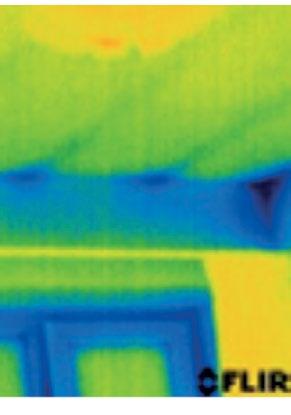
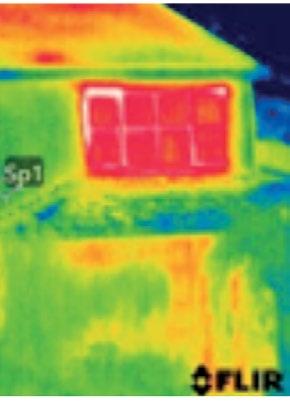

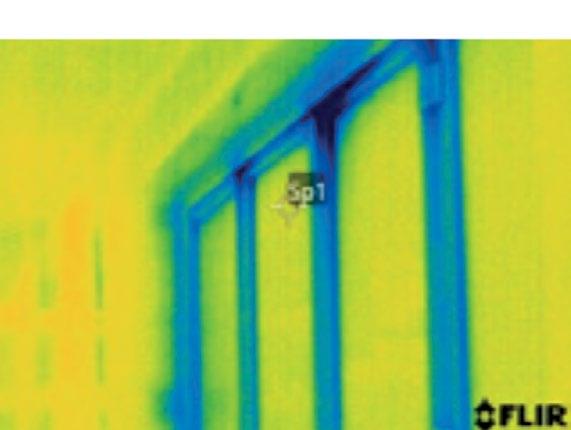


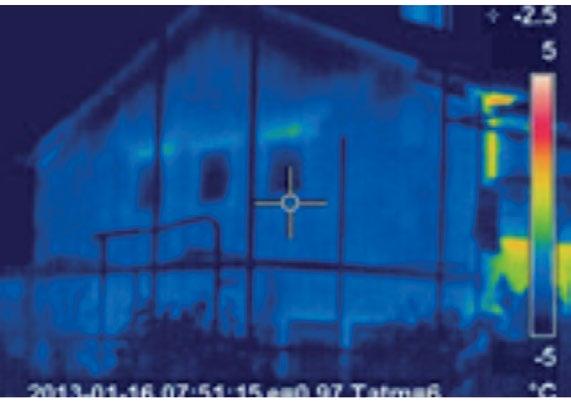
of external window and door seals after 10 years of use, in particular on large-format elements, such as doors. Airtightness tapes seem to have held overall, as the drop in performance in some houses is minimal. Only a very few instances have been found of material deterioration, and, in most cases, this has been very localised.
Moisture and mould risks were generally low, with good relative humidity (RH) levels in eight out of nine homes measured, and low or very low Build Test Solutions (BTS) Mould Risk score in seven out of nine homes. The study also recorded generally good CO2 levels in seven out of nine homes.
A focus on ventilation and maintenance emerged as crucial for long-term success. The findings also reiterated the importance
A RESEARCHER’S PERSPECTIVE

Many CIBSE members aren’t engaged in domestic retrofit, says project co-leader Marion Baeli, who was partner at Studio PDP until January and is now principal, sustainability transformation, at 10 Design.
She hopes that the information garnered in the study could be useful for the industry in advising retrofit projects. ‘It’s crucial to conduct the right tests at the starting point, employ appropriate methods, understand the caveats, and ensure a good maintenance plan,’ she says.
Baeli advises that there is no ‘one size fits all’ approach to a retrofit: ‘When you’re starting a project, a retrofit coordinator may be useful in creating a detailed plan, or there are training courses, such as the PAS2035 course, that can be valuable.’
She says that some of her clients are clued up and see the risk of being exposed to high carbon assets. ‘Clients have asked us to decarbonise a whole stock because they can’t have that much CO2 in their financial stock. We’re advising them to reduce demand and then harness renewables,’ says Baeli.
One major change 10 years on is the profusion of heat pumps. ‘We didn’t know then that there was an alternative to gas boilers’ says Baeli. ‘The main issue at the time was to reduce CO2. Now the target would be to reduce demand sufficiently to enable you to use an air source heat pump.’
The Retrofit Revisit report emphasises the efficacy of retrofit. ‘We want to give people the confidence that it does work and show that it is a good investment,’ says Baeli. ‘Yes, it’s disruptive, but you only have to do it once for the lifetime of the property and, if you take care of it, it will continue to perform.’
of maintenance. Common issues include clearing gutters and downpipes, and windows and door maintenance.
Systems
The report found that complex systems were more likely to fail. HVHR has been shown to be reliable in these case studies. This was not necessarily expected, as these systems were still quite innovative at the time. Ease of controls remains an issue, even in homes where residents report good comfort and relatively simple systems. There are issues with the metering of solar thermal.
Low carbon strategies since Retrofit for the Future have evolved greatly, in parallel with Grid decarbonisation. Eight out of the 10 homes have a gas boiler, and only one a heat pump. The more common approach now would be for an all-electric system (typically, heat pump) and PVs, rather than solar thermal.
Overall, feedback is very positive, with the sample homes showing results significantly
better than the Soap Retrofit benchmark. Comfort has been delivered in all houses and winter comfort is rated very highly in the majority of homes; summer comfort is less so, but no worse than the benchmark. Temperature, RH, and CO2 are within recommended ranges for most homes.
Evaluation techniques
The common methodology was useful to check and agree an approach and bring consistency, with input from all and an Excel sheet for basic energy reporting. The core and detailed BPE methods proved complementary, and the detailed techniques brought useful additional findings. All homes used the same indoor environmental quality sensors. This helped with consistency of data, allowed the use of the BTS platform for many tests, and supported the evaluators for training and queries.
Challenges
There was a small window to monitor homes over winter, after funding was confirmed in January. More preparation time would have been valuable. Despite initial enquiries with the residents and housing associations about their willingness to engage and the availability of energy data, this proved a challenge in a small number of homes once the study began.
More developed templates would have made reviewing and cross-project data collation and reporting quicker and more consistent, and detailed aspects of the methodology could have been modified or made more explicit.
www.cibsejournal.com April 2024 27 STUDY | RETROFIT REVISITS
CJ Table 1: Average annual energy use of sample Annual gas use, kWh/yr Annual electricity use, kWh/yr EUI, kWh·m-2/yr
Mean:
Mean: 4,340 (incl
from PVs
79 (for some homes an underestimate,
of a lack of metering of thermal systems) Existing UK
(NEED,
Mean: 12,800 Mean: 3,600 Mean : 166 (gas: 129 and electricity: 36) LETI
50 (+10 if constrained –eg, heritage)
Retrofit Revisit sample
6,930 (excluding two that are electric)
supply
for two homes)
because
stock
2023 )
Climate Emergency Retrofit
Marion Baeli, was co-leader of the project with CIBSE’s head of net zero policy, Julie Godefroy
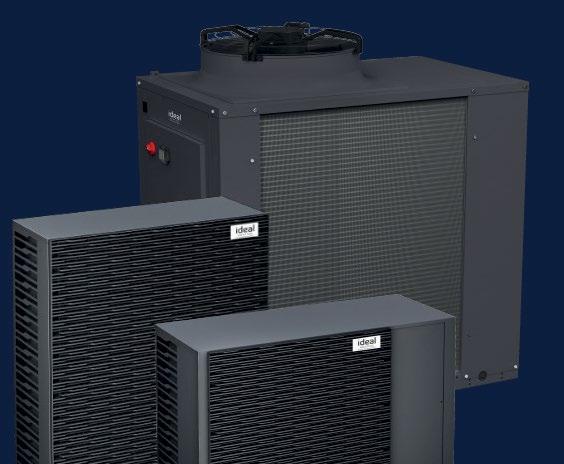





28 April 2024 www.cibsejournal.com 15kW - 50kW SCAN ME GET A QUOTE TODAY idealheating.com/commercial-heat-pumps Helping the UK decarbonise heating in commercial buildings Commercial heat pumps from the UK’s leading heating manufacturer Ultra-low GWP Natural refrigerant High temperature R290 AVAILABLE TO ORDER NOW! ECOMOD 290HT
This month: Heat pumps in schools, heat network zone response, AI in data centres
Surge in heat pump installer qualifications
Almost 8,000 people have completed training this year
The number of people qualified to install heat pumps in the UK has increased by 166%, according to new data from the Heat Pump Association (HPA).
Almost 8,000 installers completed their training in 2023, compared with fewer than 3,000 in 2022. This growth highlights the heightened interest and investment in the UK heat pump market, with the support of government grants, including the Home Decarbonisation Skills Training competition, skills boot camps, and the Heat Training Grant.
A projected 33,700 heat pump installers will be needed to support the transition to clean heating systems if the UK is to reach its ambitious net zero targets, says the HPA. The figures indicate encouraging progress towards this goal.

‘We are witnessing a pivotal moment in the acceleration of heat pump deployment, and the sector is leading the charge,’ said Laura Needham, chair of the training working group at the HPA. ‘Having a qualified, competent and committed heat pump installer network is vital to meeting the government’s net zero targets.’
The HPA says it has the facilities to train 40,000 people each year to ensure the workforce is ready to meet the increasing demand for heat pump installations.
Call for retrofit case studies
The International Energy Agency and the Department for Energy Security and Net Zero have teamed up in a call for case studies of successful retrofits of heat pump systems in large, non-domestic buildings.
The case studies will be a central component of a three-year international project (Annex 60) that aims to assemble a portfolio covering many types of building, levels of refurbishment and heat pump systems.
The project is looking initially for basic information on the location and nature of the project – in particular, the original and retrofitted systems, and how long it has been in operation. This will be collected using an online form, which can be found at bit.ly/492D21B


Aira launches subscription model for heat pump
Aira has launched a new propane (R290) heat pump with an ‘affordable’ monthly payment plan. The Swedish company said its financing model removes the upfront costs of installing a heat pump.
Aira is also offering a 15-year ‘Comfort Guarantee’, including an installation warranty.
The heat pump, which comes in three sizes – 6kW, 8kW and 12kW – has no display, with customers operating the settings via a thermostat and a smart app.
It comes with ‘Aira Intelligence’, a set of smart, connected features that continuously learn the customer’s routine and household habits to plan their heating and hot water more precisely.
Nibe announces job losses in Europe
In light of declining heat pump sales across Europe, Swedish manufacturer Nibe has terminated 340 jobs.
The decision is part of a cost-cutting initiative aimed at aligning the company's expenses with reduced sales volumes. It follows a five per cent decline in European heat pump sales in 2023 – a stark contrast with the previous decade's growth.
CEO Gerteric Lindquist acknowledged the difficulty of the decision, but emphasised its necessity because of challenging market conditions. Approximately 264 positions at Nibe, and 40 at subsidiary CTC, will be affected, with similar reductions expected in other European operations.
www.cibsejournal.com April 2024 29 SPECIAL FEATURES
■ HEATING AND DATA CENTRES
Too many all-electric schools are being designed for peak loads that will never be met, says Cundall’s
Peter Hazzard, who has been analysing data from previous designs to slash electrical demand
ESSENTIAL LESSONS FROM ELECTRIC SCHOOLS
For a long time now, the schools and colleges sector has been at the forefront of energy efficient design. The energy efficiency standards in the Department for Education’s (DfE’s) Output Specification have steadily increased over the past decade, and while, initially, this was more about reducing operational costs than emissions, it has meant the sector was the first to adopt a swathe of measures, such as predictive energy modelling, to try to make its building stock the most energy efficient in the UK.
Despite this industry-wide push, however – and engineering calculations that indicate usage will be lower – consultants and contractors are hesitant to trust the efficiency of all-electric systems. They are also inexperienced in determining accurately the peak electrical loadings for all-electric buildings.
They do not understand, or are not ready to believe in, the efficiency of these recent technologies. This is partly because they are not willing to trust the calculations made in the design stages and tend to overdesign margins. This is a significant barrier to widespread adoption of all-electric designs – not just in schools, but in all types of buildings.
As the first wave of all-electric schools start to reach completion, it is up to building services engineers to bridge the gap and help educate the industry, so we all have confidence in the calculations. We need to look at how these first all-electric schools perform in operation by regularly measuring and reporting the performance. This is not something we have historically been good at as an industry, and it requires a step change to get everyone on the same page. Once you start looking at these schools, numbers are clear, and they go a long

way to helping understand actual demands and usage. They can then be fed back into calculations in the design stages of future schemes. Recently, Cundall was part of the project team that completed West Coventry Academy, a 12,000m2 secondary school with a sports block and swimming pool. Part of the DfE’s School Rebuilding Programme and Net Zero Carbon in Operation Pathfinder scheme, it was handed over in September 2023, and is all-electric in operation except for a small gas boiler that serves the pool’s waterheating system. The school has air source heat pumps (ASHPs) for heating and kitchen hot water, and direct electric hot water for everything else. It also has LED lighting and controls, and a small photovoltaic (PV) array (100% PV array was not specified in the brief, but there is room to add this in the future).
The building has a well-insulated and airtight façade, featuring Innovare structural insulated panels and high-performance glazing. The design peak heating load is 280kW, just 23W/m 2. Ventilation is hybrid, incorporating mechanical ventilation units with heat recovery for all occupied spaces for tempered fresh air in winter, and natural cross-ventilation via circulation atria roof turrets for summertime ventilation. The only cooling is to the server room, and some classrooms have exposed ceiling fans to aid thermal comfort.
The school had taken part in the DfE’s ‘pathfinder scheme’ and, in 2021, had employed the then new DfE Output Specifications and technical annexes that had not been put into practice on any scheme previously, and had continued as a test location for these
“Consultants and contractors are hesitant to trust the efficiency of all-electric systems and inexperienced in determining accurately the peak electrical loadings”
SCHOOLS | HEAT PUMP PERFORMANCE 30 April 2024 www.cibsejournal.com
PROJECT TEAM
Client: Department for Education
MEP & sustainability consultants: Cundall
MEP subcontractor: Derry Building Services
Main contractor: Bowmer + Kirkland
Architect: Stride Treglown

new specifications. When we designed West Coventry Academy, we called on our experience with a previous Priority School Building Programme project, finished in 2018, that we knew had resulted in a maximum in-use electrical demand of just 276kVA (17.2W/m 2).
Many did not believe we had achieved such low figures, but we had the electric bills and meter readings to validate this over several years. With this in mind, we designed West Coventry Academy to have a maximum in-use electrical demand of 550kVA (48.2W/m2), and we were confident our design would generate results similar to previously acheived. When the design and build subcontractor took over at RIBA Stage 4, however, they were not so confident in our calculations and an 800kVA supply was installed.




Fridges/freezers
Small power
HVAC
DHWS
IT (inc cooling)
Catering
Total MD
Six months on from West Coventry Academy being handed over, the school has experienced a winter that included a particularly icy -8°C cold snap, on 18 January 2024. The Cundall team visited the site a few weeks later to gather data and discovered that the maximum demand recorded was just 398kVA (33.7W/m2) – lower than even we had predicted for maximum energy demand, and far, far less than the 800kVA supply that had been installed.
This is a clear demonstration of the efficiency of all-electric designs, even in extreme conditions. It also highlights the potential cost implications of overdesigning maximum electrical demand and the associated infrastructure and low-voltage supplies.
It is a habit that we, as an industry, have acquired after years of designing low-efficiency, poorly insulated gas-fired schools. This overdesign not only adds cost, but also carbon – in construction and for the school itself, which, potentially, is left with a lifetime legacy of higher standing charges for a capacity it will not use.
On a lot of new or replacement schools, this can lead to expensive substation upgrades and highvoltage network reinforcement, which, again, may be unnecessary for the school in the long term.
Another reason the industry tends to overdesign schools is that the BSRIA BG9 2011 design guide suggested an electrical services load of 35W m-2 for naturally ventilated schools (or 50W m-2 for mechanically ventilated ones), and this assumes that heating and DHWS energy is fed by gas or other nonelectric sources. The guidelines are based on 12-year-old data from gas-fired heating and hot water, and haven’t been updated to account for all-electric schools. (BG 9 has now been superseded by BG 84/2024 ‘Space and Weight Allowances’ ).
Typically, total connected loads are established based on good design data, and percentage-based diversity factors are then applied to equipment, ASHPs, domestic hot water systems, and other loads. These percentage based diversities are no longer appropriate.
In recent years, we have seen electrical infrastructure designs presented of typically 120W/m2 – nearly four times the maximum demand recorded at West Coventry Academy on the coldest day of the winter. Some designs are even higher, and this is clearly based on guesswork, not empirical data or good practice.
We cannot really blame designers for this; the guidelines have not kept up with the current rate of change when it comes to best practice on how we design our schools.
To counteract this problem, Cundall has established a school daily demand profile tool (see graph, left). The peak loads have been taken from actual meter readings of all-electric schools that we have designed. The daily data around these peaks is based on metered annual
www.cibsejournal.com April 2024 31 SCHOOLS | HEAT PUMP PERFORMANCE
As can be seen, the real diversity in use across the day varies greatly by system. The data confirms and supports that diversities on total connected loads in a school are extremely varied and, therefore, percentage-based diversity calculations are not an appropriate tool.
Left: The school’s well-insulated and airtight façade features Innovare structural panels and high-performance glazing
Lights
Heat inc K Vent
consumption data, with some adjustments applied depending on school specific facilities for design and technology or computing. BIN weather data is employed to simulate annual profiles based on the available data. When a full set of seasonal meter readings are available they will be used to improve the model.
The central premise is that the sum of all hourly and daily loads can be used as a check and equated back to an annual load. We must design schools to achieve specific DfE energy use intensity targets, expressed as kW/annum/m2, and, clearly, if these are exceeded in this check sum, you have overestimated a particular load.
This data can be extrapolated and used on any other school type to assist with future design estimates, and is a far more accurate way of calculating maximum in-use electrical demand until the guidelines catch up.
My hope is that we can speed up that process and replace the simplistic rules of thumb by feeding the irrefutable data we have collected already into upcoming design specifications.
In the meantime, the key for everyone in the industry, but especially building services engineers, is to keep measuring and reporting regularly on the in-use operational performance of the buildings we design. CJ
■ PETER HAZZARD is a partner and schools sector lead at Cundall
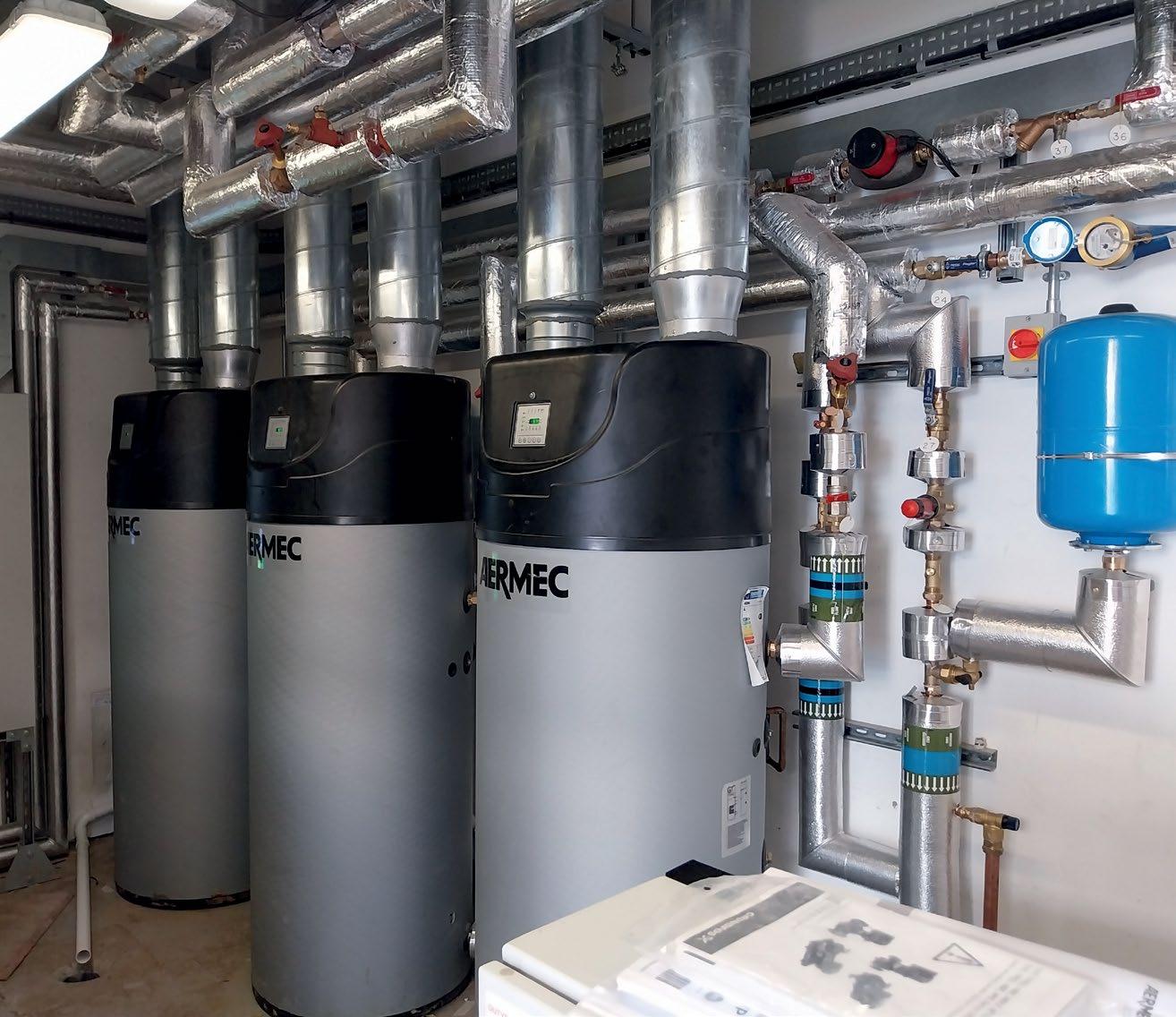

Our dMEV-NICO provides continuous background extract ventilation for new build properties, plus it’s fully compliant with the latest Building Regulations Approved Document F & L – protecting the health of your occupants.
Preventing mould with the dMEV-NICO – visit our website to find out more.




VE NT IL AT IO N COMPLIANT OR COMPLACENT? IT’S YOUR CHOICE. YOUR VENTILATION SPECIALIST 03443 715 523 www.domusventilation.co.uk COMPLIANT COMPLACENT
domusventilation_ SCHOOLS | HEAT PUMP PERFORMANCE 32 April 2024 www.cibsejournal.com
West Coventry Academy has air source heat pumps for heating and kitchen hot water






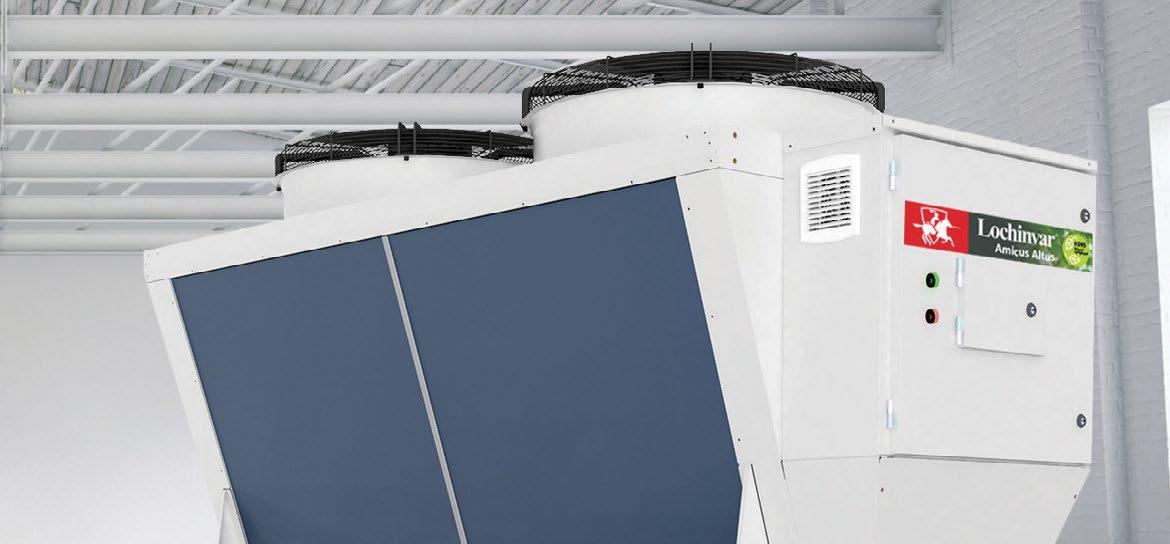




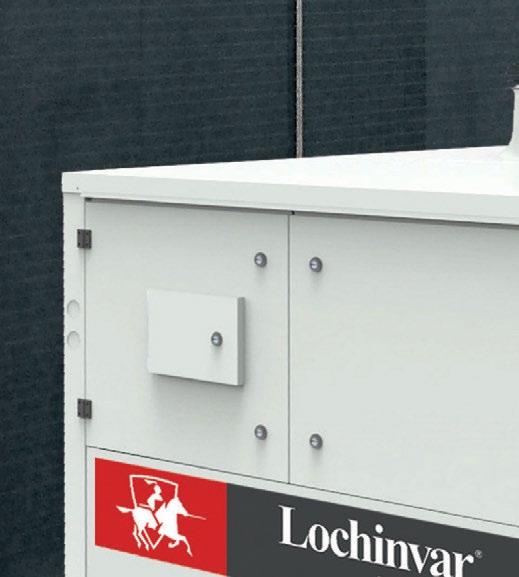


























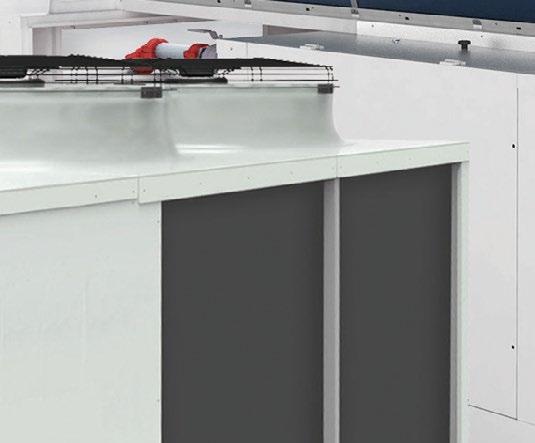
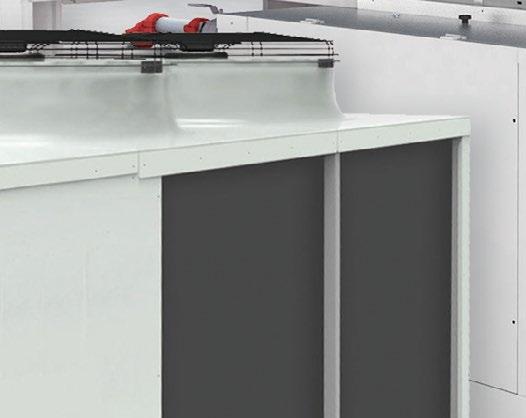














www.cibsejournal.com April 2024 33 ACROSS OUR RANGE OF HEAT PUMPS WITH IMMEDIATE DISPATCH AVAILABLE Extensive stock! Check our current stocks info@lochinvar.ltd.uk R290 Natural refrigerant
Always by your site.
The best products alone won’t guarantee Heat Network success.
SAV Advanced Service Engineer Training Scheme
In depth theoretical and practical training on site or at our training labs
FREE online HIU commissioning, servicing and maintenance troubleshooting tool
Trained servicing and maintenance companies feature on our ”Find an Engineer” page for residents
34 April 2024 www.cibsejournal.com
sav-systems.com/advanced
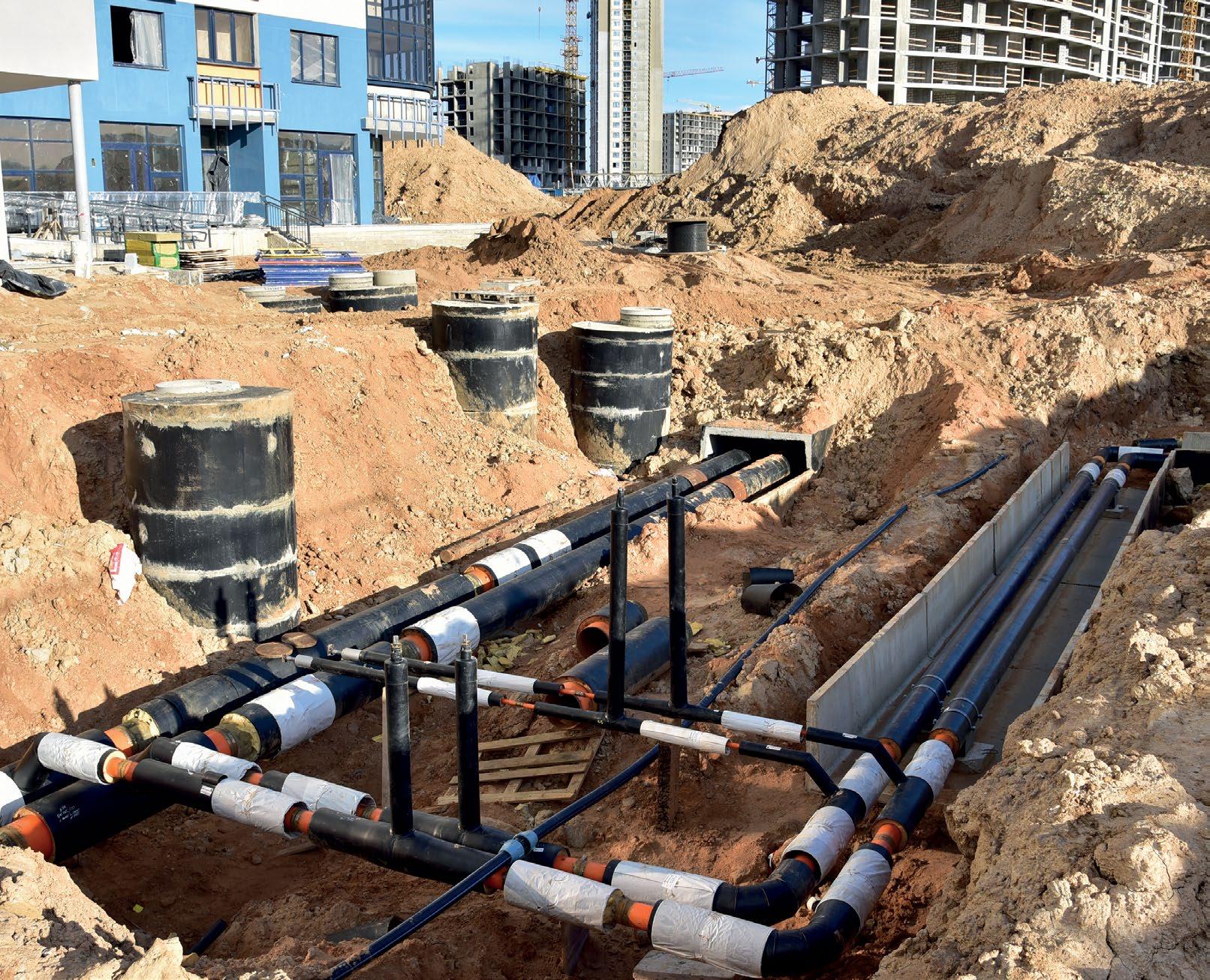
DELIVERING LOW CARBON NETWORKS
Upcoming heat network zoning regulations must consider costs to consumers and carbon content of heat, using a technology-agnostic and transparent methodology, says CIBSE, in its response to a government consultation
Government plans for the expansion of heat networks must go further to encourage their decarbonisation, CIBSE has said in its response to the heat network zoning (HNZ) consultation, which closed on 26 February.
The HNZ consultation is part of wider changes and proposals, including the December proposals for heat networks in the Future Homes and Buildings Standards (FHS/ FBS) and the upcoming regulation of heat by Ofgem. As part of this, the Department for Energy Security and Net Zero (DESNZ) is creating a Heat Network Technical Assurance Scheme, and networks will have to meet its criteria to be allowed to operate.
The current proposals allow for the continuing development of high-carbon networks for years to come, but without doing enough to support their decarbonisation, said CIBSE, which called for the decarbonisation of existing and planned networks to be addressed. It noted that, based on the current data available through the heat
metering regulations, 91% of the UK’s 11,847 networks currently use natural gas or oil as their primary fuel. CIBSE also noted that, based on DESNZ data about the pipeline of heat networks, more than 45% of heat network expansions in the pipeline are proposing gas – for boilers or combined heat and power (CHP) – as their primary fuel. However, neither consultation sets out a clear expectation and reasonable timeframe for decarbonisation of heat networks, said CIBSE.
Zoning
The HNZ consultation is significant: in zones identified by a new ‘central authority’ and local zone coordinator, new buildings, existing communally heated buildings, and some existing non-domestic, non-communally heated buildings would have to connect to the heat network. A national zoning methodology would determine which areas are suited to a heat network in terms of value for money and deliverability. It is not clear at this stage how the methodology would assess networks against alternatives, in terms of carbon
impacts and costs to consumers. CIBSE does not agree that the main counterfactual to heat network zoning is ‘do nothing’ (as is the case in the heat zoning consultation’s impact assessment), and said there needs to be a focus on other options for heat decarbonisation: ‘This is the real test of whether heat networks offer a cost-effective decarbonisation option,’ it said.
CIBSE is concerned that carbon performance and costs to heat-network consumers did not appear central to the current zoning proposals: for buildings that have to connect to a network, exemptions on grounds of carbon performance and consumer protection are unclear, while they were more prominent in the 2021 consultation, said CIBSE. ‘It is a serious risk to carbon emissions reductions, and to consumers. This must be revisited,’ it said.
CIBSE agrees that building owners should be able to apply for exemptions to connection on grounds of capital cost and timing, but said there must also be exceptions for low carbon buildings. High operational costs for consumers of a heat network must also be a reason for exemption.
Carbon limits
While CIBSE welcomes the fact that networks within a heat zone would have to meet minimum carbon content of heat criteria, it has concerns about the carbon emissions methodology used to demonstrate these criteria, which risks ‘significantly underestimating and misrepresenting the operational carbon impacts of heat networks’. First, it said the methodology proposes to use a carbon factor for CHP-generated electricity of 304g/kWhe– this is much higher than the current grid average, and is only exceeded by the grid for a small number of hours in the year (eg, around 30-40 hours in 2030, according to data from Carbon Intensity). This means the methodology would attribute benefits to CHP-generated electricity that are unlikely to be realised in practice, and even less so in the future as the Grid continues to decarbonise, said the response.
Second, the methodology does not include secondary losses in the distribution system, which could mean the underestimation of emissions, added CIBSE. While secondary systems are often under different ownership and responsibility, the secondary losses must be accounted for in one way or another, as losses are often significant, contributing to energy waste and overheating in communal parts, said CIBSE. The record of heat networks under the heat metering
www.cibsejournal.com April 2024 35 HEAT NETWORKS | ZONING CONSULTATION
regulations showed 29% losses on average, even in communal rather than district networks– see graph.
DESNZ should provide a trajectory of carbon limits applying to heat networks, so that networks are encouraged to take early measures before being required to do so, said CIBSE’s response, which also called on government not to wait until the mid2030s, as proposed, to develop low carbon standards for networks. It proposes standards are created as soon as possible given the significant time lags between planning and operation of heat networks, and would welcome dialogue with DESNZ, as it believes CP1 Heat networks: Code of Practice for the UK could play a role in this.
Public register
CIBSE’s recommendation for the HNZ and the FHS/FBS is to create and maintain a public register of networks, which would be operated by organisations independent from heat networks’ interest. According to CIBSE, this should be publicly available and independently audited, and be the single

source of information for any policy relying on operational performance of networks, including Building Regulations, zoning, funding, and so on.
The register should have information currently included in the heat metering register, and have additional data on individual networks – including energy use per fuel –allowing analysis of primary and secondary losses, and carbon content of heat, said CIBSE.
■ Heating/hot water loss from generation to supply (GWh per year)
■ Heating/hot water supplied (GWh per year)
It added that this is not the case currently, with the heat metering register providing information on the heat generated and supplied, and on the type of fuel used, but not its amount, preventing an estimate of energy efficiency and carbon content of heat.
The upcoming regulation of heat by Ofgem creates the perfect opportunity to address this, added the Institution, and it would be happy to discuss this with DESNZ. CJ




E-Tech W Wall hung electric sealed system boiler 9-36kW acv.com/gb E-Tech P Floor standing heat only electric boiler 57-259kW E-Tech M Mobile electric boiler 3-36kW E-Tech S Floor standing electric combination boiler 14-28kW Introducing our electric range. Preparing for a carbon-free future. Speak to a member of our expert team today to see how we can help with your next project SCAN ME 36 April 2024 www.cibsejournal.com
HEAT NETWORKS | ZONING CONSULTATION
6,000 5,000 4,000 3,000 2,000 1,000 0 -1,000 31% 37% 22% 26% 30% 30% 30% 31% 21% 31% 23% Yorkshireand
NorthEast North West East Midlands West Midlands EastofEngland London SouthEast SouthWest Scotland Wales NorthernIreland
Heat generated, broken down into supplied and lost in GWh/yr Heat loss as a % of heat generated is shown above each region. Average, excl North West: 29%
TheHumber
Data should be reviewed






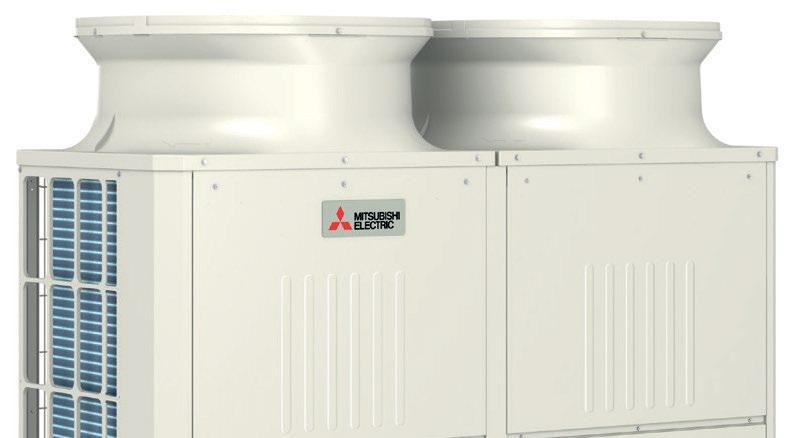









www.cibsejournal.com April 2024 37

















The 2024 CIBSE Training Programme has landed Download your copy Download and discover: The full 2024 training programme An exclusive early bird discount offer Corporate training opportunities Members of CIBSE receive 20% off all training Invest in your future with CIBSE Training #GrowYourKnowledge cibse.org/training

DECARBONISING THROUGH DATA
Two studies have looked at the impact of AI on improving the function of data centres. Molly Tooher-Rudd highlights the potential for optimisation and maintenance
Over the past year, artificial intelligence (AI) has surged to the forefront of almost every industry and is now moving into the realm of data centres.
With the exponential growth of cloud computing, data centres (DCs) have come under scrutiny for their energy use.
AI and machine-learning algorithms are extremely good at spotting patterns in datasets. This can be embraced to improve and streamline the function of day-to-day operations, enabling real-time improvements using predictive analysis.
Specifically, AI applications for energy optimisation, early fault detection and predictive maintenance are gaining traction. In this context, two studies exemplify how AI technologies are transforming practices.
Data-centre cooling
The first study, by Zhichu Wang at the University of Hull, focuses on enhancing the performance of DC cooling systems through advanced time series machine learning.
In 2022, data centres accounted for 1% of global electricity consumption, with up to 40% of this driven by their cooling systems.
Wang developed a novel time series machine-learning model for hourly performance forecasting in an operational DC’s advanced dew-point cooling system.
The dataset used to train the model was collected over four months from a live DC. This model effectively forecasts hourly cooling system performance, enabling precise short-term and long-term energy consumption predictions.
The findings encompass a wide array of
OMICRON Zero
• Eurovent certified performance
• First air-source multifunctional heat pump and chiller unit using propane as a near zero GWP, natural refrigerant solution.
parameters relevant to managing DC cooling operations. Wang anticipates that the research could herald a new era of energy-efficient DC operations.
The paper will be presented at CIBSE’s Technical Symposium in Cardiff from April 11-12 www.cibse.org/symposium
Chiller plant optimisation
In Hong Kong, a second research study looked at Chiller Energy Optimisation using Artificial Intelligence. Air conditioning in Hong Kong contributes to around 30% of total electricity consumption. In line with the government’s climate action plan, which is aiming for carbon neutrality by 2050, researchers Lai Kam-Fai, Yow Kin-Fai, Wong Tat-Tong and Li Kin-Pong implemented AI-driven chiller optimisation strategies in government and public buildings. Leveraging artificial neural networks and particle swarm optimisation computational methods, the study saw energy savings of 5-10% in revitalised chiller plants.
To enhance the energy efficiency of air cooled chiller plants, a hybrid predictive operational control strategy was employed, using variable speed drive components for optimal efficiency. This approach optimised the number, sequencing, water supply and pump speeds of the chillers.
With these promising results, a rolling schedule to extend the application of AI optimisation control to the ‘AI-ready’ chiller plants in a wide spectrum of in-service government buildings and healthcare facilities is under way. The paper was presented at the ASHRAE Winter 2024 conference.
These studies indicate how AI can harness the power of data and advanced algorithms for a more sustainable future. DCs and chiller plants embracing AI-driven optimisation may be another step towards achieving carbon neutrality. CJ

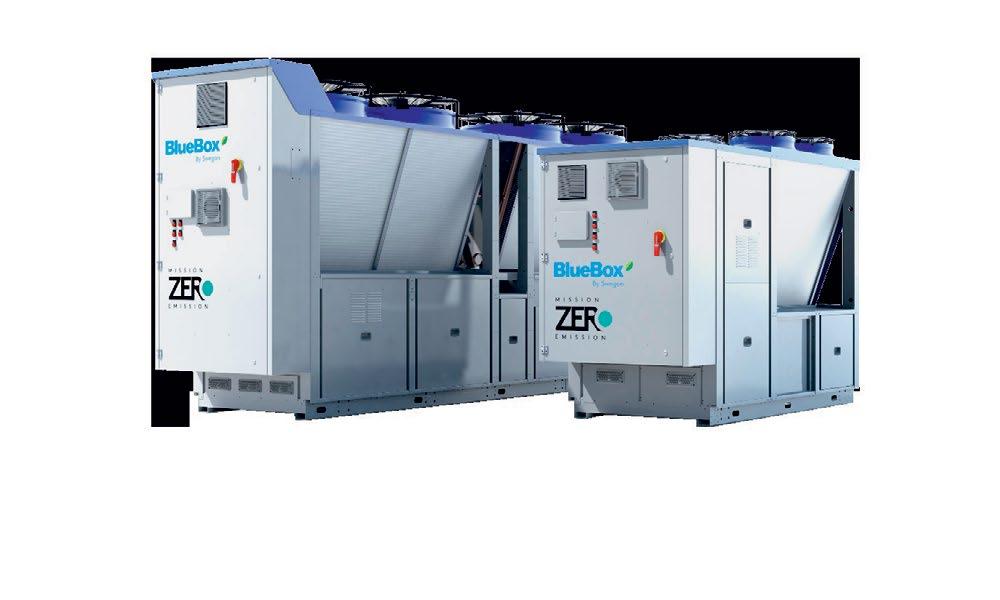
www.cibsejournal.com April 2024 39 AI | DATA CENTRES
Tyneham natural refrigerant commercial heat pumps
CO2 natural refrigerant



50kW – 130kW outputs available
Achieve high flow temperature up to 70ºC




15kW – 50kW outputs also available with R290 natural refrigerant to achieve max flow temps of 75ºC*




* Our range of











Suited to larger installations – cascade to achieve higher outputs




Ultra low Global Warming Potential (GWP)
Combine with any of our commercial heat pumps and boilers for a hybrid set up
Sign up to be the first to hear about our latest heat pump ranges.
40 April 2024 www.cibsejournal.com
SCAN HERE
natural refrigerant heat pumps includes the Tyneham CO2 and CO2Q, plus Tyneham R290HT. The Tyneham R290HT is available in 15kW – 50kW models and can achieve high flow rates of up to 75 degree C. Tyneham R290HT not pictured.

CPD PROGRAMME

Foundations for successful heat pump installations in non-domestic buildings
This module explores the early-stage assessment process for non-domestic heat pump applications
The global drive to reduce building-related emissions and the ambition to achieve net zero by 2050 requires a significant shift in how all buildings are heated and cooled. Decarbonising heating in non-domestic buildings – which account for a large proportion of emissions – will make a significant contribution towards reaching this goal. This CPD article, which draws extensively on elements of the freely-downloadable CIBSE applications manual AM17, explores the earlystage investigations and assessments that will set non-domestic building systems designers, owners and operators on a solid foundation for the development of a heat pump application.
To meet the existing energy and climate pledges worldwide, the International Energy Agency (IEA) reports1 that heat pumps will have to meet nearly 20% of global heating needs in buildings by 2030. IEA considers that the world is almost on track to reach this milestone if new installations continue to grow at a similar rate globally of more than 15% per year, as has been achieved in recent years. In stark contrast, the recent update2 by the UK government’s Heat Pump Ready initiative –which is, at least currently, focused on accelerating the number of domestic heat pump installations – reported that the UK required an annual compound market growth of 43% per year to deliver the UK government target of 600,000 heat pump installations annually by 2028. (UK growth was reported as being far lower than that in several European states with similar climates.) In its recent report,1 IEA notes that installations of heat pumps remain concentrated in new buildings and existing single-family homes, and that multi-storey apartment buildings and commercial spaces will need to be a priority area if solid growth is to continue. It is thought that the majority of the heat pumps installed in the UK in 2023 were for domestic applications.2 However, (non-electrical) heating and hot water utilise3 approximately 40% of the energy supplied to UK non-domestic premises, and therefore potentially provide a great opportunity for heat pump applications.
Continuing professional development (CPD) is the regular maintenance, improvement and broadening of your knowledge and skills, to maintain professional competence. It is a requirement of CIBSE and other professional bodies.
This Journal CPD programme can be used to meet your CPD requirements. Study the module and answer the questions on the final page. Each successfully completed module is equivalent to 1.5 hours of CPD.
Modules are also available at www.cibsejournal.com/cpd
Heat pump technology continues to advance, most recently with the increasing rollout of ‘high temperature’ heat pumps –which typically employ environmentally benign refrigerants such as CO2 and propane. This eases the transition for existing buildings, as well as new developments, to employ heat pumps as the main – or even acting as the sole – heat generator for nondomestic applications.
CIBSE AM17 Heat pumps for large nondomestic buildings serves as a comprehensive guide to support the effective design, installation, commissioning, operation and maintenance of heat pump systems of more than 45kW (see boxout overleaf). AM17 provides a technical commentary encompassing all the assessment and implementation stages of heat pump deployment, as illustrated in Figure 1. AM17 emphasises the importance of minimising heating and cooling demands before designing a heat pump system. Smaller, more efficient and more affordable heat pumps become possible by reducing peak loads. Ideally, this would include optimising the building form, which is clearly more achievable in new developments. However, the thermal performance of existing buildings can equally be enhanced by modifications such as improvements in building fabric, greater airtightness,
www.cibsejournal.com April 2024 41
SPONSOR
Reduce heat demand
Establish system requirements
Select heat pump technology
Size heat pump plant
Assess capital and operational costs
Allocate space allowances
Optimise the system Installation
Retrofit: establish site constraints and retained systems Closing the performance gap
application of thermal mass and appropriate solar shading. Demand-reduction strategies should be holistic, considering both heating and cooling demands throughout the year, while indoor environmental quality and occupant comfort must, of course, remain crucial considerations when attempting to reduce demands. The total embodied carbon of building improvements must be balanced against the reduced carbon footprint of a smaller heat pump system.
The optimisation of building thermal performance not only benefits the building owner, but also reduces the strain on the electricity grid and the knock-on impact on surrounding developments. It is recognised that not all buildings, especially those with heritage constraints, can implement every demand-reduction measure, but design teams should consider such strategies wherever possible. The process of optimisation is likely to be iterative, as various packages of interdependent building and system parameters will need to be explored to provide the best solution for a particular application.
The appropriate sizing and selection of heat pumps – such as the monobloc unit illustrated in Figure 2 – that can meet the heating demands of the building is key to avoid shortcomings in terms of capital and operational costs, space, noise, efficiency and life-cycle emissions. The fundamental requirement is to examine the loads and temporal zonal load profiles, considering intended use, building usage patterns, plus factors including fresh air ventilation rates, internal design conditions and any process loads. AM17 notes that standard methods of load estimation are provided in CIBSE Guide A4 and BS EN 12831-1:2017.5
Dynamic thermal modelling and simulations (which are increasingly enabled through a data-rich BIM model) can provide useful intelligence around loads and time-dependent profiles that inform scenario and sensitivity analysis to help understand the potential impact of varying building parameters. This could include such areas as building construction details; operational setpoints; optimised, adaptive ventilation methods; and the integration of thermal storage. Careful use of adaptive and weather-compensated internal design conditions can provide significant load reductions (as long as the system finally installed is appropriately controlled). Any analysis should reflect impending climate scenarios by employing appropriate future weather files that account for potential shifts in temperature and precipitation. For existing buildings, co-heating tests, metered data and tenant information may be used to aid the prediction of future loads. Annual, daily, and hourly profiles can reveal periods of simultaneous heating and cooling, as a means of establishing an understanding of peak instantaneous load. CIBSE TM546 provides methodologies for the estimation of the annual energy consumption in buildings.
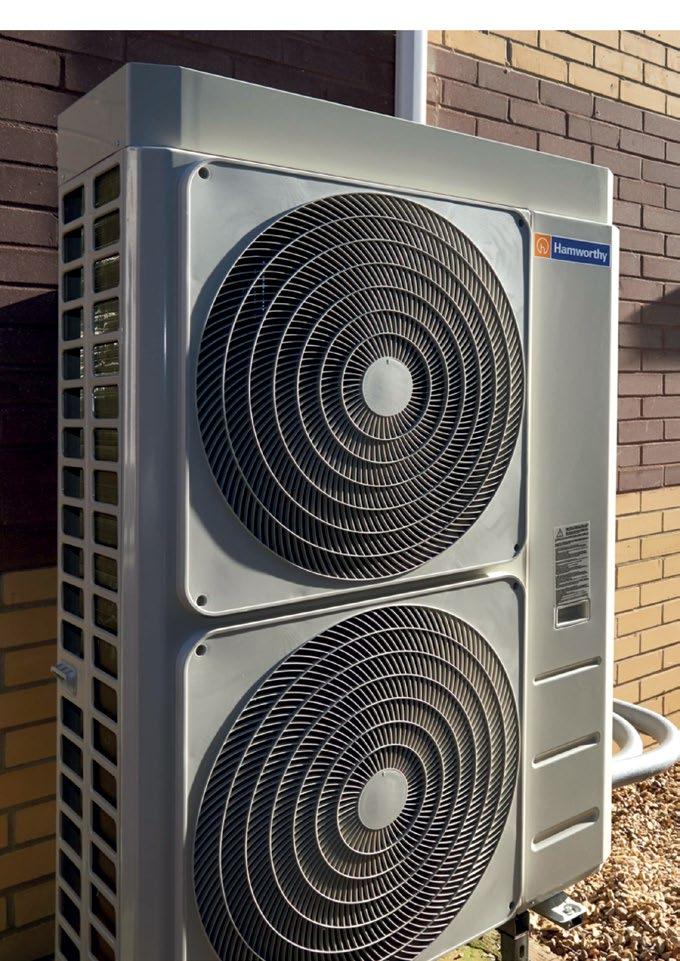
When selecting and sizing the central heat pump system, diversity factors for zonal and occupational demands are likely to have a more significant impact on oversizing than with traditional fossil-fuel systems. It is important to take a measured approach to the impact of future tenant loads, as being over-generous with future allowances could lead to an oversized and probably less efficient system. Domestic hot water demands are notably challenging to predict, and the demand should be diversified according to an appropriate standard for the application. For a discussion of the issues associated with this, see CIBSE Technical Bulletin No 1. 7
Non-commercial buildings that have high domestic hot water use – for example, hotels, multi-residential developments, restaurants, healthcare facilities and leisure centres – require particular care, as assumptions made at the early stages of design can be overturned with later system selections that can significantly impact the previously expected performance of the building thermal systems. Systems should be planned for variations in demand as different parts of a development are occupied, as well as to cater for future building needs. Understanding how often the system is likely to perform at part-load and mid-load will help inform designers and operators how the systems are likely to operate prior to full building occupation or during periods of unpredictable and fluctuating usage patterns. Each type of building, and each application, will have specific needs. AM17 provides a high-level summary of some of considerations required for a selection of building types, shown in Table 1, that illustrates the need for careful consideration of specific applications.
Systems are typically designed with some resilience that permits operation while, for example, individual heat generators (and associated sub-systems) are
CPD PROGRAMME | HEAT PUMPS 42 April 2024 www.cibsejournal.com
Figure 2: This is an example of a monobloc R32 air source heat pump with a heating SCOP of up to 4.48 (@ 35°C flow) and 3.31 @ 55°C) – this particular range has outputs of between 14 to 70kW and can be cascaded to achieve higher outputs in larger installations (Source: Hamworthy)
Figure 1: The process of successfully implementing heat pumps in large non-domestic buildings (Source: CIBSE AM17)
Operation Monitoring
Commissioning
Decommissioning
BUILDING TYPE CONSIDERATIONS FOR A HEAT PUMP SYSTEM
Commercial office
Often cooling dominated. Future tenant loads need predicting. Ceiling coordination may restrict emitter size and therefore cooling distribution temperatures
Hospital Stringent resilience requirements. High hot water loads. 24-hour operation in some areas
Hotel
Pools
High levels of domestic hot water (DHW) diversity. Mixed-use elements (gym, pool, restaurant, retail): may be opportunity for heat sharing. Very variable occupancy – impact on space heating and cooling diversity
May present a good opportunity for heat sharing with neighbouring cooling-dominated uses. Constant heating load to pool heating. High DHW demands. Pools can act as a thermal store. Can reclaim latent heat from ventilation extract
Gyms Cooling driven; highly variable loads. High DHW demand
Cinemas/theatres High occupancy, potential for some diversity from different operating hours to neighbouring uses
Restaurants and cafés
Careful consideration of occupant profiles
Retail Potential for more relaxed internal setpoints. Seven-day use; some very variable loads; can have high lighting loads
Airports and train stations More stringent resilience requirements
Factories/warehouses Likely to be constant base-load
Data centres More stringent resilience requirements. Limited heating demand. Constant heat gains from equipment
Schools and universities Potential for more relaxed internal setpoints. Holiday periods
Stadia More stringent resilience requirements
Museums and galleries May have more stringent internal environment requirements
Mixed use Heat sharing opportunities
maintained or repaired; when buildings experience surge heating or cooling loads; or simply to accommodate a need to reduce building heat-up times. Careful analysis is required to establish the optimum arrangement of heat pump units and thermal storage to deliver the most effective solution. Thermal storage is increasingly employed to maximise the heat exchange between cold and hot water generation, which can significantly improve operational efficiency. This can be particularly effective where there are coincident heating and cooling demands, such as domestic hot water on a summer day when space cooling is required; where different zones of the building have disparate heating and cooling demands; or possibly where there is an opportunity to balance heating or cooling process loads. Temporal storage can be an asset, particularly in areas with mild climates, allowing time-shifting of loads to provide greatest overall efficiencies by
CIBSE AM17: HEAT PUMP INSTALLATIONS FOR LARGE NON-DOMESTIC BUILDINGS
This freely downloadable CIBSE application manual, published in 2022, serves as a valuable resource for building services designers, installers, operators and maintainers, providing comprehensive guidance and best practice for the successful implementation of large heat pump systems in non-domestic buildings. By following the recommendations and guidelines outlined in this document, stakeholders can ensure efficient, reliable and sustainable heat pump systems that contribute to energy savings, reduced carbon emissions and improved indoor environmental quality. The guidance encompasses new and existing buildings, and is aimed at systems with a thermal output exceeding 45kW that might be used to provide one or more of the services needs of a building, including space heating, cooling, domestic hot water and process heat. Although the applications are tailored specifically to the UK context and regulations, the engineering principles are universal and provide an excellent starting point for those considering applying heat pumps for non-domestic purposes rather than in single family homes. AM17 is available at bit.ly/CJApr24CPD1. For a free PDF, use code ‘AM17’
storing either high- or low-temperature heat. Any analysis of the requirements for thermal storage should be based on hourly modelling and include the impact stores have on overall heat losses and heat sharing capacity. Heat pump effectiveness will deteriorate with excessive on-off cycling, as clearly demonstrated for domestic applications in the 2012 report by Robert Green.8 This can be significantly reduced through having sufficient thermal capacity in the water distribution system and associated thermal stores. In commercial systems employing multiple, properly sized and staged heat pumps, excessive cycling should not be a significant problem.
If there is a desire, or a need, to employ bivalent or multivalent systems – where loads are shared with, for example, fossil fuel boilers, direct electrical heaters, water chillers and solar thermal collectors – then an assessment must be undertaken to determine the proportion of the loads that will be provided by each technology. This may be relatively simple if, for example, a gas boiler is providing top-up heating for a low-temperature heat pump to ensure legionella-safe domestic hot water, but, otherwise, further iterative analysis will be needed that will include assumptions of the future system selection and design. Bivalent solutions have been relatively common with low-temperature heat pumps (where higher temperatures have been required to meet the loads); however, as heat pumps evolve to effectively provide higher flow temperatures, this is likely to become less of a technical issue. Lower hot water and higher chilled water temperatures will tend to improve heat pump performance, as well as reduce distribution thermal losses. In turn, these will also impact components and their performance – including pipe sizes, pumps, heat emitters and heat exchangers – so will add a further level of complexity to the optimisation process.
A well-designed and installed heat pump system can provide significant cost savings compared with traditional heating and cooling systems. However, proper system design, installation, commissioning, operation and maintenance are crucial to ensure optimal performance, energy efficiency and longevity of heat pump systems. Without an appropriate foundation of assessment and analysis, it is unlikely that the installed solution will provide the desired – and essential – decarbonisation that can otherwise be delivered by heat pump applications.
© Tim Dwyer, 2024.
■ Turn to page 44 for references.
CPD PROGRAMME | HEAT PUMPS www.cibsejournal.com April 2024 43
Table 1: Considerations for the design of a heat pump system (abstracted from AM17)

Module 231
April 2024
1. What growth in UK heat pump installations is suggested as being required each year to reach current government targets?
A 0%
B 15%
C 20%
D 40%
E 43%
2. What is the minimum size of heat pump installation that AM17 is specifically written for?
A 5kW
B 15kW
C 30kW
D 45kW
E 60kW
3. What is advised as the first stage in successfully implementing heat pumps in non-domestic buildings?
A Assess capital and operational costs
B Establish system requirements
C Optimise the system
D Reduce heat demand
E Select heat pump technology
4. What modelling is noted as being necessary to assess thermal storage requirements?
A Quarter-hourly
B Half-hourly
C Hourly
D 12-hourly
E Daily
5. Which of these is not specifically noted as a requirement to ensure optimal performance, energy efficiency and longevity of heat pump systems?
A Building type
B Commissioning
C Installation
D Maintenance
E System design
Name (please print)
Job title Organisation
Address
Postcode
Email
Are you a member of CIBSE? If so, please state your membership number:
The CIBSE Journal CPD Programme
By participating in this CPD module, you consent to sharing your details with Hamworthy. Hamworthy may contact you via email and/or telephone with further information and technical insight on its services. You have the right to opt out from such communications at any time.
I understand that I will receive marketing communications from Hamworthy after completing this module (please tick here)
By entering your details above, you agree that CIBSE may contact you with information about CPD and other training or professional development programmes, and about membership of CIBSE, if you are not a member. Go to www.cibsejournal.com/cpd to complete this questionnaire online. You will receive notification by email of successful completion, which can be used to validate your CPD records. Alternatively, fill in this page and post it to: N Hurley, CIBSE, 222 Balham High Road, London, SW12 9BS
References:
1 bit.ly/CJApr24CPD2 – accessed 1 March 2024.
2 bit.ly/CJApr24CPD3 – accessed 10 March 2024.
3 Building Energy Efficiency Survey (BEES), UK BEIS, 2016.
4 CIBSE Guide A.
5 BS EN 12831-1:2017: Energy performance of buildings. Method for calculation of the design heat load, BSI 2017.
6 CIBSE TM54: Evaluating operational energy use at the design stage, CIBSE 2022.
7 CIBSE Technical Bulletin 01: Domestic water demand assessment for pipe sizing
8 Green, R, The effects of cycling on heat pump performance, UK DECC, 2012.
CPD PROGRAMME | HEAT PUMPS 44 April 2024 www.cibsejournal.com
SPONSOR
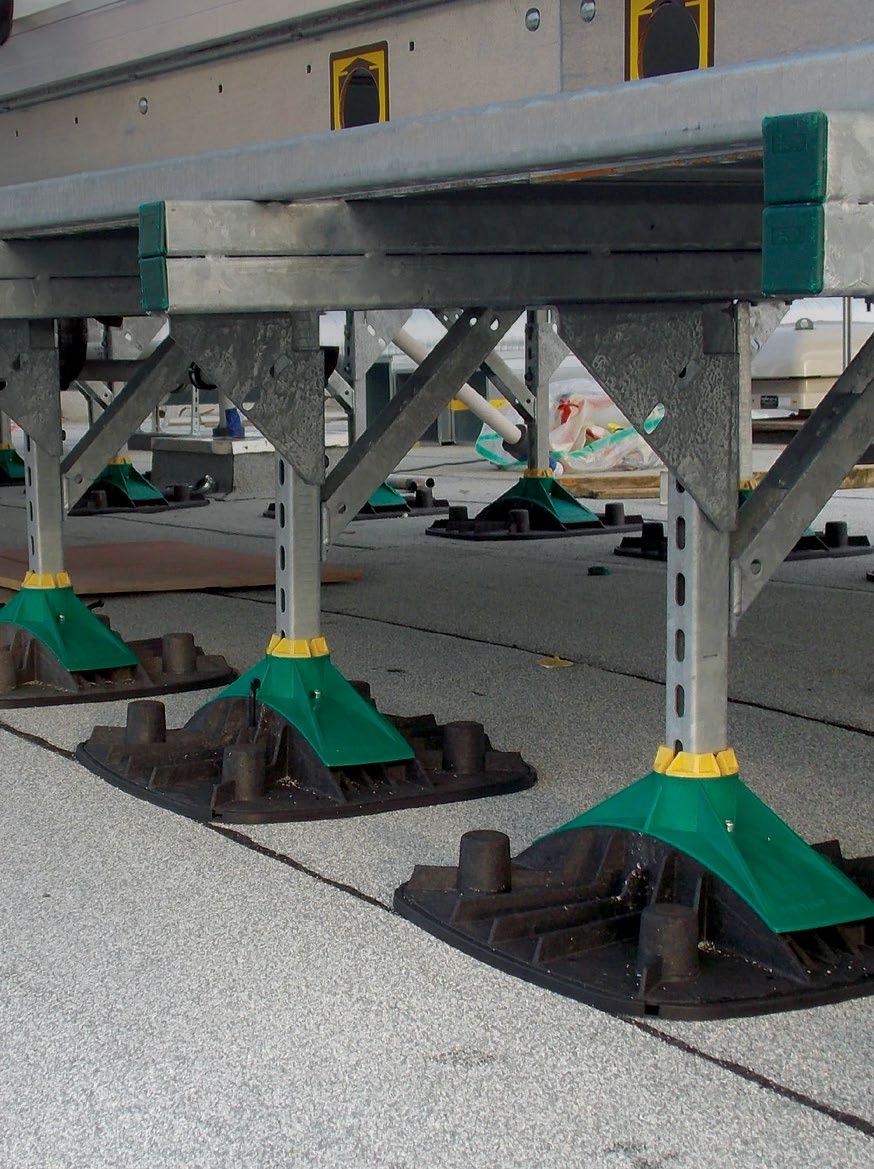


Walraven Yeti® 480 feet can support M&E installations on surfaces with up to 7° pitch! The Yeti® foot was used on the new Everton Stadium build due to its many benefits including:
■ Non-penetrative fixing solution with high load capacity
■ Fast installation – the pitch adjustment can be made in seconds!
■ Made of WPC (recycled plastic and wood fibre composite)
■ Certified noise reduction and UV resistance
■ Optional ballast blocks for increased weight/stability
Alongside our versatile Walraven Yeti® feet we provide full modular solutions for rooftop M&E installations and technical support in-house and on site.
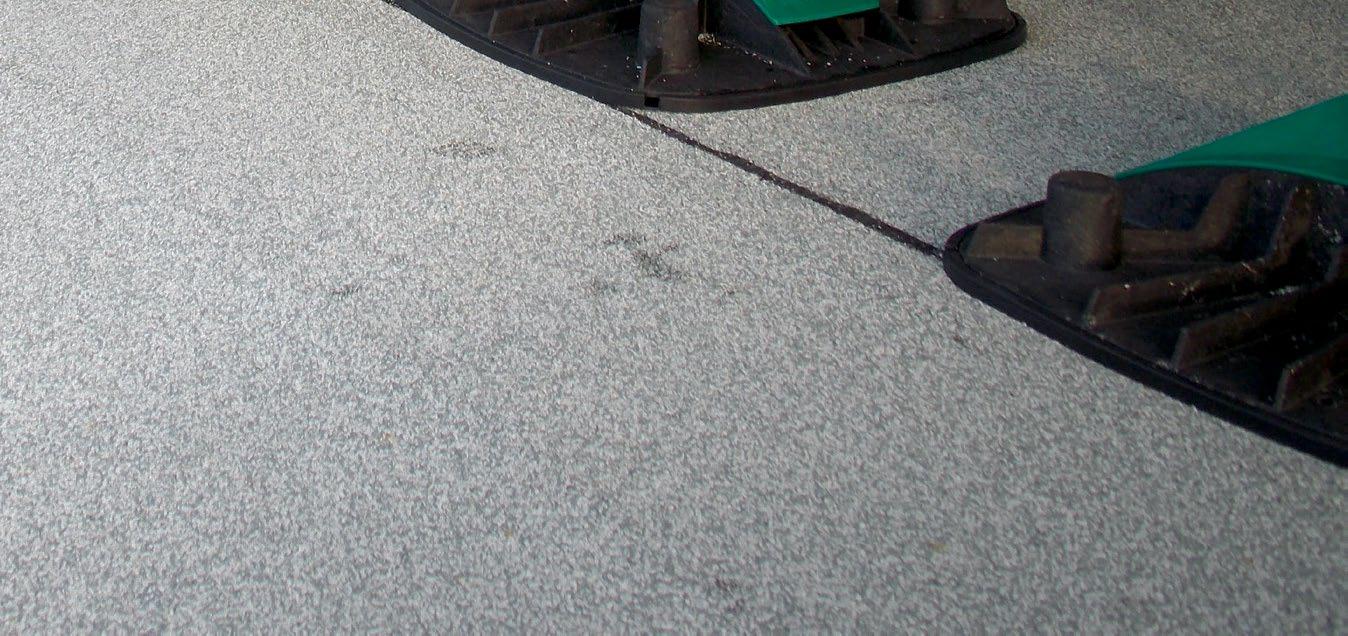
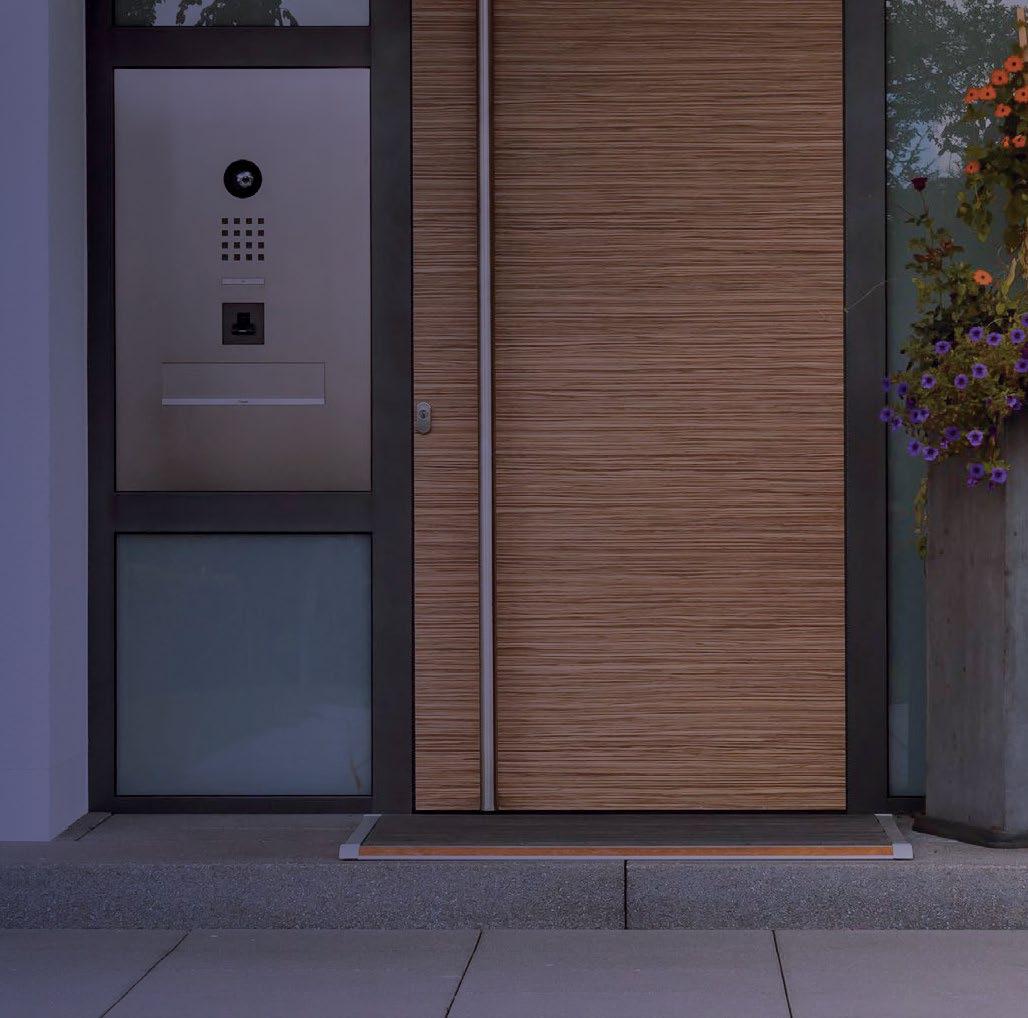



www.cibsejournal.com April 2024 45
Walraven Yeti® supports walraven.com Pitched roof? No problem! ≤ 7° Need an easy solution for fixing to a sloped roof? Find out more about Walraven Yeti® and request a demonstration at: walraven.com/en/yeti EcoFlow PowerOcean DC-FIT 5 Little Park Farm Road, Segensworth West, Fareham, Hampshire PO15 5SJ, United Kingdom | paul.smith@ecobat.com | +44 (0)7808 760420 VISIT US AT ECOBATBATTERY.COM Scan to visit our site An easy and cost-effective retrofit battery storage solution for a residential PV system. With EcoFlow’s unique PV-coupling technology, the PowerOcean DC-Fit enables direct connection of the battery to the solar system on the PV side, eliminating the need for an additional storage inverter. CIBSE Advert April 24 133x186+3 indd 1 07/03/2024 15:45:33
PRODUCTS & SERVICES
Products of the month
Is hydrogen a sustainable choice?
Pete Seddon, technical manager at Rinnai, takes a deep dive into the potential of hydrogen as an energy source
As global economies push towards clean and sustainable national energy sources, hydrogen has emerged as a potential source of energy capable of decarbonising and delivering power to domestic and commercial applications.
Despite the Whitby and Redcar hydrogen village trial cancellations, the UK government has taken a strategic policy decision to support hydrogen gas blending of up to 20%.
The question on many minds, however, remains: is hydrogen heating truly a safe and sustainable option for domestic hot water (DHW) and commercial heating projects?
Efforts to minimise carbon emissions on a large scale necessitate significant infrastructure changes spanning generations. These changes, ranging from generation to distribution, will shift reliance away from mass-produced singular energy sources and towards shared technology and diverse fuels, where hydrogen could play a pivotal role.
Advantages of hydrogen include its zero carbon emissions and its potential to be produced with renewable resources, such as wind and solar power. Hydrogen usage may also create healthier air quality and help the UK reduce its reliance on fossil fuels.
There are several safety concerns, however, given hydrogen’s highly flammable nature, so it requires careful handling and storage, similar to many domestic and commercially used gases worldwide.
Construction of hydrogen infrastructure is also currently incomplete and could demand existing in-building pipework to be connected to existing commercial heating systems. This means hydrogen may not be accessible or cost-effective for every building.
Because of concerns regarding hydrogen usage, we move to explore the safety aspects of hydrogen heating.
Understanding the safety of hydrogen commercial heating
There are numerous reports investigating the safety risks and advantages associated with hydrogen heating. The UK government will decide on the feasibility of hydrogen heating in 2026, while the Health and Safety Executive (HSE) will provide an authoritative and


“Advantages of hydrogen include its zero carbon emissions and its potential to be produced with renewable sources, such as wind and solar power”
impartial report on all safety aspects concerning 100% hydrogen distribution.
The support provided by the HSE will feed into government policy decisions in 2026, based on the HSE’s 2023 call for evidence on hydrogen heating. The HSE will also work with the energy regulator, Ofgem, gas operators, and the Department for Energy Security and Net Zero (DESNZ) on potential neighbourhood hydrogen heating trials and evidence supporting hydrogen usage across other regions in the UK.
The primary focus of the HSE is to ensure that network operators possess a full understanding of all risks associated with hydrogen heating, storage and distribution. The HSE has also set up a future hydrogen regulatory workstream to assess the suitability of HSE enforced regulations. This will consider the regulatory and legislative changes that will be required to enable a
potential larger rollout of 100% hydrogen for heating. Further, the HSE will develop options for any necessary amendments to the health and safety regulatory frameworks. This will contribute to potential policy options for future safety regulation in the final quarter of 2024, followed by written advice to the DESNZ in March 2025, ahead of the final decision on hydrogen for heating in 2026. Therefore, if greater volumes of hydrogen do enter the UK gas-distribution network, it will only be after a complete safety review.
There are several case studies where hydrogen has been implemented. They demonstrate that hydrogen heating is not just a theoretical concept, but may be a practical and viable solution for reducing carbon emissions and transitioning to a more sustainable energy system.
Case study 1: the Netherlands –www.hystock.nl
The Netherlands has taken a leading role in exploring hydrogen heating. The HyStock initiative aims to produce and store hydrogen using excess renewable energy. Stored hydrogen is used to provide heat and power during periods of high demand, reducing national reliance on fossil fuels.
Case study 2: Japan
Japan can also be considered a global leader in hydrogen exploration as a sustainable heating solution. The city of Fukuoka has launched a pilot project in which renewably generated hydrogen provides properties with heating and hot water. The project has shown promising results in terms of reducing carbon emissions and increasing energy efficiency.
Conclusion
Hydrogen heating has the potential to be a safe and sustainable energy option. However, a final decision will only be made after a robust and detailed safety review is presented alongside a comprehensive regulatory framework.
Hydrogen offers environmental benefits, such as zero carbon emissions and renewable sustainability that reduces fossil fuel use. Safety considerations and limited infrastructure, however, are areas that require further development and study.
■ For details on hydrogen developments at Rinnai UK, visit Hydrogen Sustainability: Rinnai UK (rinnai-uk.co.uk)
46 April 2024 www.cibsejournal.com
Tel: 020 7880 6245 Email: cibsedirectory@redactive.co.uk
Siemens expands Desigo capabilities with new controller
Siemens has introduced the PXC5. E24 automation station, enriching the Desigo HVAC and building control system with increased flexibility, interoperability, and ease of installation.
A fundamental requirement for efficient building automation is a reliable control system. Featuring 24 onboard I/Os, extendable to 80 points, the controller ensures efficient building automation. Its dual RS485 ports facilitate Modbus data point integration via RTU and/or BACnet protocol, with KNX PL-Link for seamless network extension.

Installation is simplified through the ABT Site engineering tool and ABT Go mobile app, while the controller can power up to four extension I/O modules. Secure remote connectivity allows offsite monitoring and system adjustments, enhancing sustainability and reducing site visits. Security measures include certificate handling and signed firmware to thwart cyber attacks.
Desigo caters for facilities of any size, enhancing comfort, productivity and energy efficiency.
With PXC4, 5 and 7 stations, Siemens offers a flexible solution for diverse requirements.
■ Visit www.siemens.co.uk/buildingtechnologies or www.siemens.com/smart-infrastructure
Fujitsu launches new design for cassette grille
Fujitsu General Air Conditioning UK has introduced a new sleek, black grille option for its Circular Flow ceiling cassette, expanding the design choices for architects and designers when specifying equipment.
Using a touch panel, the 360 cassette grille allows individual control of louvres for direct or indirect airflow, ensuring superior comfort in any space. Enhanced energy efficiency is achievable with the optional human sensor, automatically switching off when the room is unoccupied.
■ Visit bit.ly/3IF5CeZ


Orfao and Keegan join Exi-tite
Exi-tite has enhanced its technical team, with Bruno Orfao as group engineering manager and Andrew Keegan (centre) as technical applications manager for HVAC products at Exi-tite Ireland.
Orfao brings a decade of experience from Fridgetech UK and LG Electronics, and has global experience. Keegan, with more than 35 years in the Irish market, aims to introduce advanced solutions.
Andrew Robinson (left), managing director of Exi-tite Group, expressed excitement about the additions, highlighting their contribution to the company’s growth and innovation.
■ Visit exi-tite.com
Fujitsu introduces the new Airstage Controller
Fujitsu General Air Conditioning UK has debuted the UTY-RVRY local controller, a stylish addition to its Airstage systems. Recognised with a Good Design Award in 2022, and a finalist in the 2023 IDEA awards, it has a frosted panel, mirrors and glass, creating a sleek, floating appearance. Coloured LED lighting indicates modes and it has a glare-free design. Operation is via swipe motions, and an anti-fingerprint coating ensures visibility. Bluetooth connectivity facilitates easy programming via the Airstage Remo Set app.
■ Call 0118 9821 555

E-Tech M is latest addition to AVC’s low carbon electric heating solutions
ACV UK has introduced the versatile E-Tech M electric heater to complement its low carbon electric heating line-up. The new mobile heater accelerates screed drying while serving as a backup heating solution. With a plug-in adaptable to six power sources, ranging from 3kW to 36kW, and automatic power detection, it suits various commercial and industrial projects.
Featuring a 4.3-inch screen and customisable drying programs, the E-Tech M simplifies operation and maintenance. ACV’s E-Tech range offers efficient electric heating options, reducing carbon footprint and maintenance costs.
■ Visit www.acv.com/gb

Knaresborough Inn welcomes guests with energy-efficient Hamworthy Heating system

The recently refurbished Knaresborough Inn, formerly Dower House, in Yorkshire, has embraced efficiency with a new Hamworthy Heating system. Sine Consulting chose the system to meet Grade II-listed building demands. Featuring Stratton mk3 wall-hung condensing boilers and Dorchester DR-SG water heaters, the compact design fits limited spaces.
With stainless steel components, corrosion resistance ensures longevity. Familiar with Hamworthy’s reliability, Sine Consulting praises its support. The system guarantees ample hot water for the growing inn, ensuring guest satisfaction.
■ Call 01202 662 552 or visit www.hamworthy-heating.com
www.cibsejournal.com April 2024 47 PRODUCTS | SERVICES
Tel: 020 7880 6245 Email: cibsedirectory@redactive.co.uk
Sunderland Council implements Hamworthy heat pump system to cut carbon emissions
Sunderland Council has installed a new Tyneham heat pump system from Hamworthy Heating, taking steps towards reducing carbon emissions at its Stanfield Business Centre offices. The hybrid setup, combining the air source heat pump with a gas boiler, offers an efficient and sustainable solution.
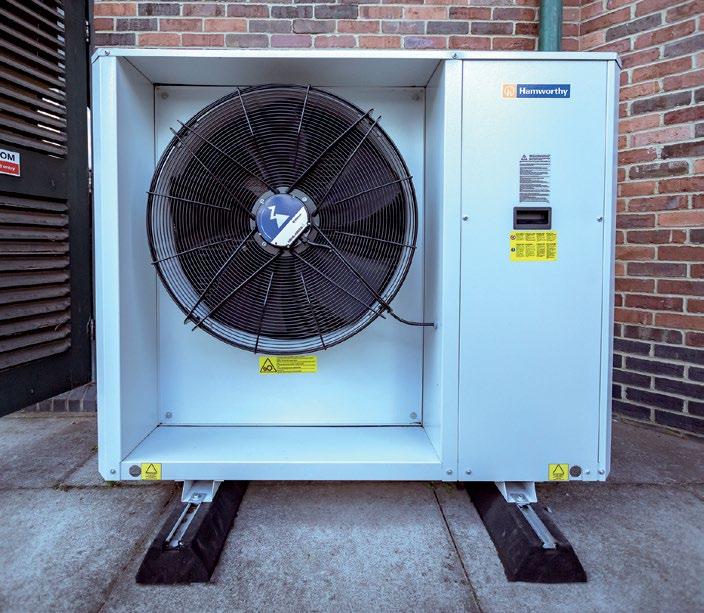
Serving as the primary heat source, the Tyneham heat pump efficiently increases the heat up to 55°C in a buffer tank. With a focus on operational reliability and low carbon heating, the system’s components boast impressive efficiency ratings, with a coefficient of performance of up to 4.85.
■ Call 01202 662 552 or visit www.hamworthy-heating.com

Elevate your game
Condair RS steam humidifiers have been installed in Sporting Edge’s cutting-edge environmental training chambers to harness precise humidity control. As a global leader in altitude and environmental facilities, Sporting Edge caters for Premier League clubs, universities, Olympic associations, and high-end residences worldwide.
With chambers that replicate climates from -30°C to +50°C, 20% to 95% relative humidity, and altitudes up to 9,000m, Sporting Edge relies on Condair’s technology.
■ Visit www.condair.co.uk
DIRECTORY
Your guide to building services suppliers


New smoke fan CPD from Nuaire
Nuaire has launched a new CPD on hightemperature axial fans and variable speed drives (VSDs), addressing BS EN 12101-3:2002 standards and compliance. Simon Plummer, Nuaire Axials divisional manager, clarifies VSD use during fire events since 2015.
The CPD explains test conditions and design best practices, and stresses the importance of tested fan/VSD packages.
As with all of Nuaire’s CPDs, the one on high-temperature axial fans and VSDs can be delivered free of charge at Nuaire’s head office in Caerphilly, South Wales, online via Teams, or at a customer’s premises. Attendees gain full CPD credits and certificates.
■ Visit bit.ly/3TiB3R4
Building Services Forum strives for net zero
The Building Services Forum, on 6 June at The Building Centre in London, aims to champion net zero initiatives.





















Focused on cutting-edge technologies and industry best practices, the event highlights retrofitting as a key strategy for updating older buildings and curbing carbon emissions.
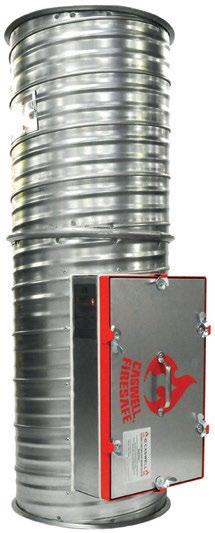



One focus of the one-day technical briefing and exhibition will be how retrofit brings older, less-efficient buildings up to modern standards while reducing carbon emissions. Secure your spot to stay informed, make connections, and exchange knowledge with industry peers and leading manufacturers in this dynamic field.
■ Visit www.bseeforum.co.uk/book-tickets
New Jung Pumpen Data Book is a comprehensive reference for engineers
Engineers seeking a traditional reference can now access the new printed Jung Pumpen Data Book, rather than browsing the internet. The book contains details of all the company’s wastewater and sewage floor-mounted pumping systems, including the Hebefix, DrainMinor, DrainMajor, DrainKing, and Compli models. The book is offered by Pump Technology, which is authorised by Jung Pumpen for equipment specification and supply.
■ Call 0118 9821 555 or visit www.jung-pumps.co.uk
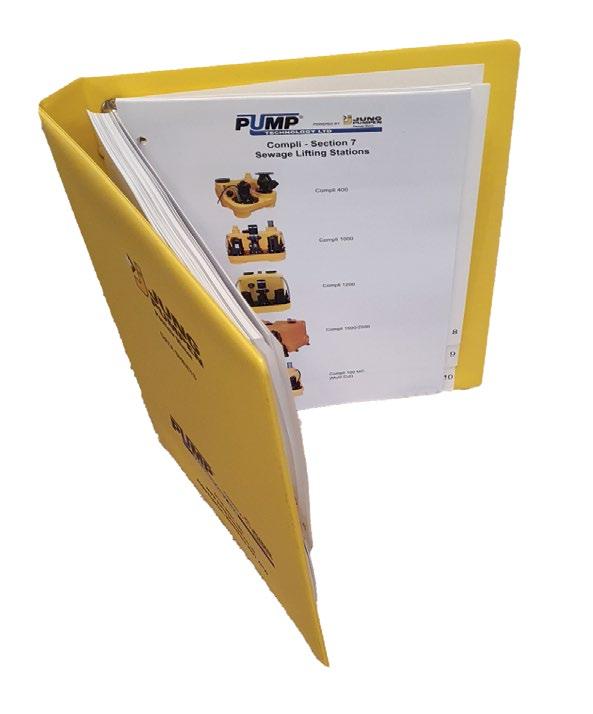
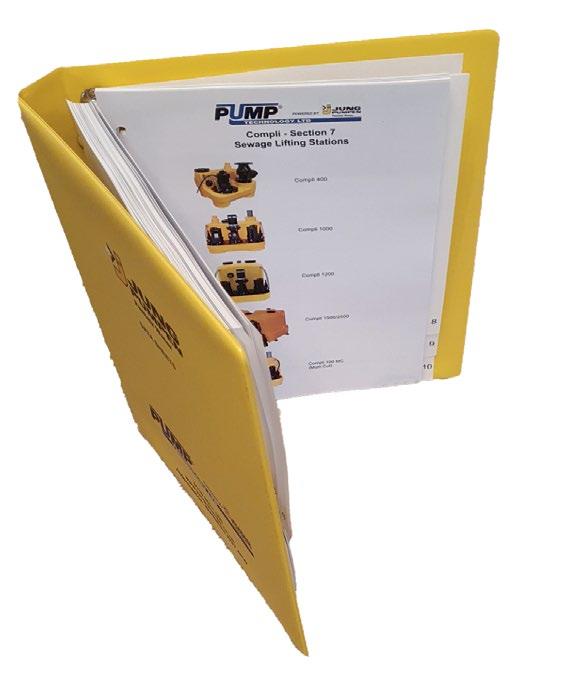
48 April 2024 www.cibsejournal.com PRODUCTS | SERVICES ® UK • EUROPE • MIDDLE EAST • ASIA • USA THIRD PARTY CERTIFIED CASWELL FIRESAFE® is licensed to Manufacturing Partners worldwide by FIRESAFE Fire Rated Ductwork® Ltd firesafeductwork.co.uk
Tel: 020 7880 6245 Email: cibsedirectory@redactive.co.uk
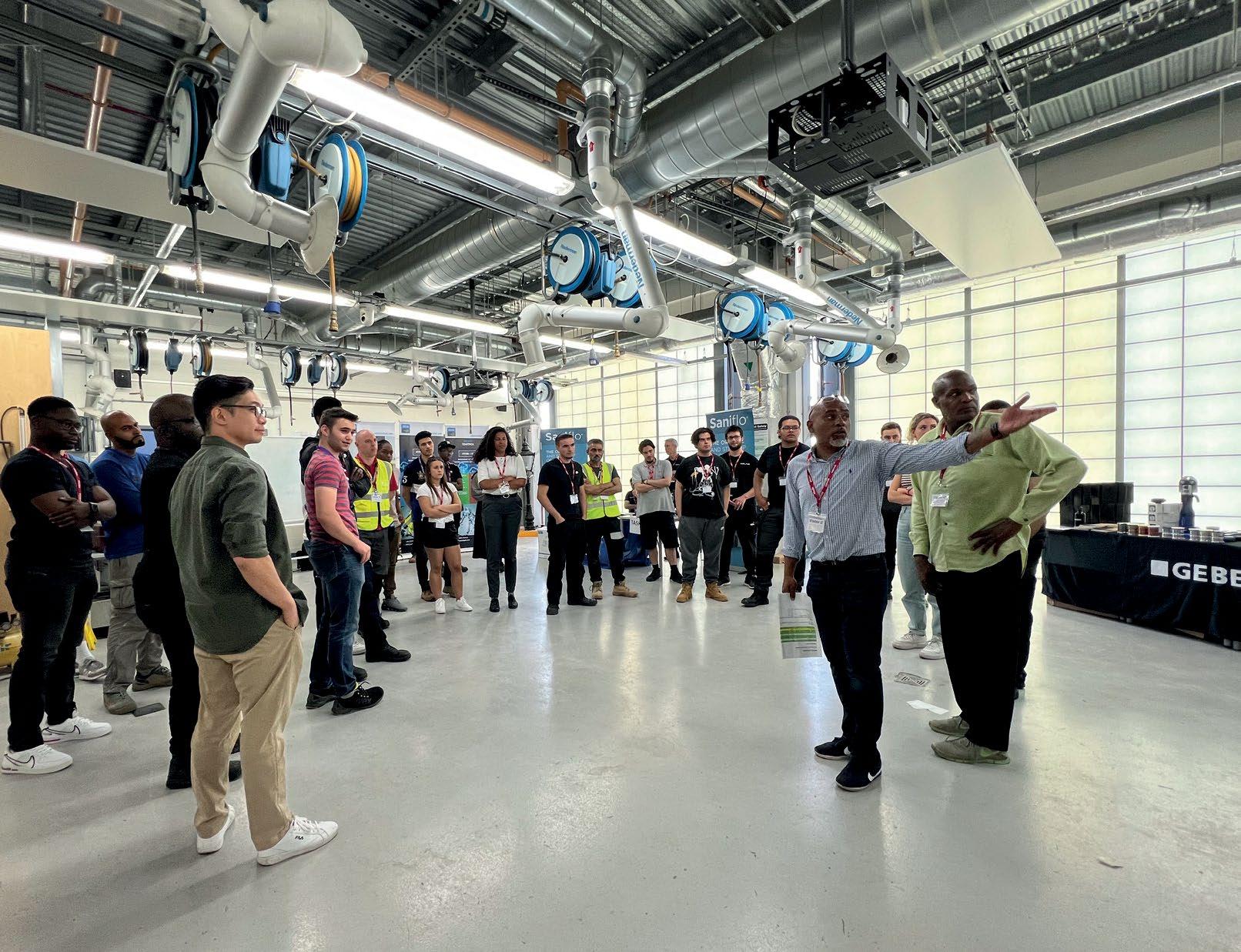
On which subject areas does the PCE focus?

Nurturing talent
The Society of Public Health Engineers looks to advance careers in plumbing and heating by fostering a proactive approach to education. Sanjay Modasia, who helps coordinate the society’s events, answers questions about the Plumbing Centre of Excellence
The Society of Public Health Engineers’ (SoPHE’s) Plumbing Centre of Excellence (PCE) aims to provide better education and support for public health engineers within CIBSE. Sanjay Modasia, operations manager at JA Brooks Mechanical Services, is a member of the SoPHE committee and coordinates its PCE Young Engineers plumbing competition. He gives an insight into the benefits of joining the PCE.
What is the SoPHE Plumbing Centre of Excellence?
It launched in 2018, and was developed by the SoPHE Contractors Group, supported by the SoPHE Steering Group and its Industrial Members. The goal is to provide plumbing trainees, apprentices and young engineers with clear career-progression opportunities, whether that is in the domestic, commercial or design sector of the industry.
Why was it established?
It was prompted by the need to tackle pressing concerns such as water conversation, energy efficiency and environmental issues, including flooding. Addressing the persistent skills shortage within the industry has been a major problem for many years. The PCE aims to bridge the gap by enhancing students’ knowledge and, ultimately, making them more employable.
What learning opportunities are offered to members?
The PCE is a supplement to the Plumbing NVQ levels 1, 2 and 3, providing avenues for trainees and apprentices to further develop their technical skills, knowledge, and career aspirations. It prepares them to meet the diverse needs of the sector. To create the programme, we worked with like-minded colleges and their lecturers, who recognised the need to strengthen education provision for plumbing and heating students.
It offers courses on new and emerging technologies, such as water treatment and energy conservation, as well as system awareness and design principles, including siphonic rainwater drainage, rainwater harvesting/greywater reclaim, solar thermal systems, heat interface units, and softened water systems. It also explores plumbing materials, such as HDPE, stainless steel and cast iron, highlighting their applications in commercial projects.
How is your learning delivered?
It is facilitated through various means, including CPD lectures, display materials showcasing plumbing materials used in commercial environments, and access to innovative education methods, such as augmented and virtual reality. Practical training workshops, alongside exposure to design drawings, project discussions, site visits, and plumbing competitions, are also integral to the learning experience.
The SoPHE Young Engineers Network (YEN) is very involved in the committee, running project-related discussions and talks. There are also plumbing competitions for college students and the YEN. The PCE emphasises lifelong learning, and encourages members to participate in continuing professional development to stay updated with industry advancements.
What would you say to someone who is thinking of joining the PCE?
It offers numerous benefits, particularly for young engineers. Members gain invaluable experience that enhances their employability and prepares them for a successful career in the industry. It is a win-win scenario for all involved. Fostering a more knowledgeable and skilled workforce contributes to the growth and sustainability of the plumbing sector while empowering individuals with opportunities for professional development.
What is the PCE YEN competition?
It’s the annual flagship event. SoPHE’s young engineers compete alongside college students in problem solving, hand skills and practical fault finding of installations. The next competition is on 14 June at Waltham Forest College. To find out more, visit bit.ly/CJPC24
www.cibsejournal.com April 2024 49
Q&A
SoPHEs Plumbing Centre of Excellence/ Young Engineers Network Plumbing Competition Competition is the PCE’s annual flagship event
Sanjay Modasia
EVENTS AND TRAINING
NATIONAL EVENTS AND CONFERENCES
CIBSE Technical Symposium
11-12 April, Cardiff University
With the theme Fit for 2050 –Delivering buildings and defining performance for a net zero built environment, the 2024 symposium will present a range of peer-reviewed papers and presentations outlining the latest developments in practice, technology and policy, and highlight the latest guidance for building services engineers. www.cibse.org/symposium
Decarbonisation Conference
18 June, Royal College of Surgeons, London
David Partridge, chair of the governance board for the Net Zero Carbon Buildings Standard (NZCBS), is the keynote speaker at this conference, which will give an update on CIBSE’s collaborative work on the UK NZCBS, retrofit, refrigerants, district heating, and heat pumps. It will also outline what the new standard means for those working in related fields. www.cibse.org/events
On-demand training
CIBSE REGIONS AND GROUP EVENTS
Check the website for up-to-date information on regions and groups meetings, webinars and podcasts Visit: www.cibse.org/events
Healthcare Group: AGM 10 April, online
With appointment of new committee members.
Healthcare Group: Medical locations – their origins and future 10 April, online
Discover the history and future of medical locations, with Ian Chell, formerly MHRA technical adviser on electrical installations in medical locations.
ANZ: How to become a professional member of CIBSE 10 April, online
Information on becoming an Associate or Member grade of CIBSE, and how to achieve professional registration with the Engineering Council at Incorporated Engineer and Chartered Engineer levels
CIBSE has a portfolio of on-demand courses that contain interactive online content, with quizzes and additional resources to support your learning. go.cibse.org/training-mycibselearning
Benefits include:
n Online platform accessible on desktop and mobile devices
n Courses and modules available offline when using the app
n Flexibility
n Interactive content
n Corporate training exclusive tools (dashboards, reports)
CIBSE JOURNAL WEBINAR
The latest CIBSE Journal webinar, sponsored by Vertiv and titled ‘The evolution of IT cooling with liquid cooling technology’, is now available on demand. Register at www.cibsejournal.com/webinars
All previous Journal webinars are also available on demand.
FM Group: Chemical-free water treatment
18 April, online
Presentation on water treatment and the VDI 2035 standard, by eleXion
Facilities management: Retrofitting ‘intelligent fans’ in legacy buildings
18 April, London
Opportunities for upgrading
HVAC systems in legacy buildings will be explored by ebm-papst.
Lifts Group: Scotland seminar
30 April, Glasgow
An evening dedicated to networking and discovering the latest advancements in the lift industry.
UPCOMING REGIONS AND GROUPS AGMS:
Yorkshire: 10 April, Leeds
Building Simulation: 17 April, London
HVAC Systems: 17 April, online
Electrical Services: 17 April, Manchester
Natural Ventilation: 18 April, London
TRAINING COURSES
CIBSE’s courses are run as inperson or live online training. Corporate delivery is also available in-house face to face, or remotely online.
See www.cibse.org/training
Mechanical services explained
9-11 April, remote
30 April – 2 May, London
Building services explained
23-25 April, London
21-23 May, remote
Energy Savings Opportunity Scheme (ESOS)
24 April, remote
Energy surveys
26 April, London
7 May, London
Energy strategy reports
30 May, remote
Building Regulations
Part O: Overheating
23 April, remote
30 May, London
School Design:
19 April, online
Resilient Cities:
22 April, online
Energy Performance:
22 April, London
Heritage: 24 April, Liverpool
Facilities Management:
24 April, London
Electrical services explained
16-18 April, remote
Introduction to the Building Safety Act
17 April, remote
7 May, remote
Introduction to Heat Networks and Code of Practice
16 May, London
Heat Networks Code of Practice full course
10-11 April, remote
8-9 May, London
Below-ground building drainage
18 April, remote
The importance of energy-efficient buildings
15 May, London
Low carbon consultant building design
9-10 April, London
24-25 April, remote
Commissioning Code M: Commissioning management
14 May, remote
Design of ductwork systems
6 June, London
MEMBERSHIP WEBINARS
CIBSE Membership hosts free two-part webinar series to support members with applications for the Associate and Member grades and registration with the Engineering Council at Incorporated Engineer and Chartered Engineer level.
For upcoming dates and to register visit: bit.ly/CJMemWeb
Upcoming dates: 9 and 16 April
50 April 2024 www.cibsejournal.com




































































SPONSOR Scan and use the code JOURNAL_TS to get a standard ticket price

www.cibsejournal.com April 2024 51
CMR Controls manufactures low air pressure and air volume measurement sensors and control systems for standard air conditioning,clean rooms,sterile laboratories,containment facilities,and fume cupboard extract systems.

DPC CONTROLLER
Fast and accurate controls to drive high speed dampers or invertors. Full PID stand alone controls with BMS interface.
DPM PRESSURE SENSOR
Panel Mount Pressure or Velocity Transducers with remote alarms,analogue and digital interfaces.Traceable calibration certificates supplied as standard.
AIR MANAGEMENT SYSTEM
A complete turn-key system to control room pressure to +/-1Pa.Fume cupboard face velocity to 0.5m/s at high speed and provide constant air changes into the labo - clean room.
CAV AND VAV DAMPERS
Accurate air flow measurement with the unique CMR Venturi built into the airtight shut-offdamper to control room pressure or constant volume.
PPS EXTRACT DAMPER
Poly-propelene control and shut offvalve incorporating the CMR Venturi Nozzle.This is essential when dealing with corrosive extract air especially from fume cupboard systems.
Metal Damper PPS Damper PRECISION COMPONENTS FOR VENTILATION AND PROCESS CONTROL
A Division ofC.M.RICHTER (EUROPE) LTD 22 Repton Court,Repton Close, Basildon,Essex SS13 1LN.GB Website:http://www.cmr.co.uk
(0)1268 287222
(0)1268 287099
HEPA FILTER NORMAL EXTRACT EXTRACT CONTROLLER LABO - CLEAN ROOM FUME CUPBOARD VAV EXTRACT DAMPER CAV SUPPLY DAMPER PPS DAMPER
CMR CONTROLS
Tel:+44
Fax:+44
E-mail:sales@cmr.co.uk






































































































































































































































































































































